10 ...
माय बिटकॉइन वॉलेट ऐड्रेसPlease give me one
bc1qmrhs5lzqx50fqyzt8uuyztujlkhl8n548qrn85
Cricket
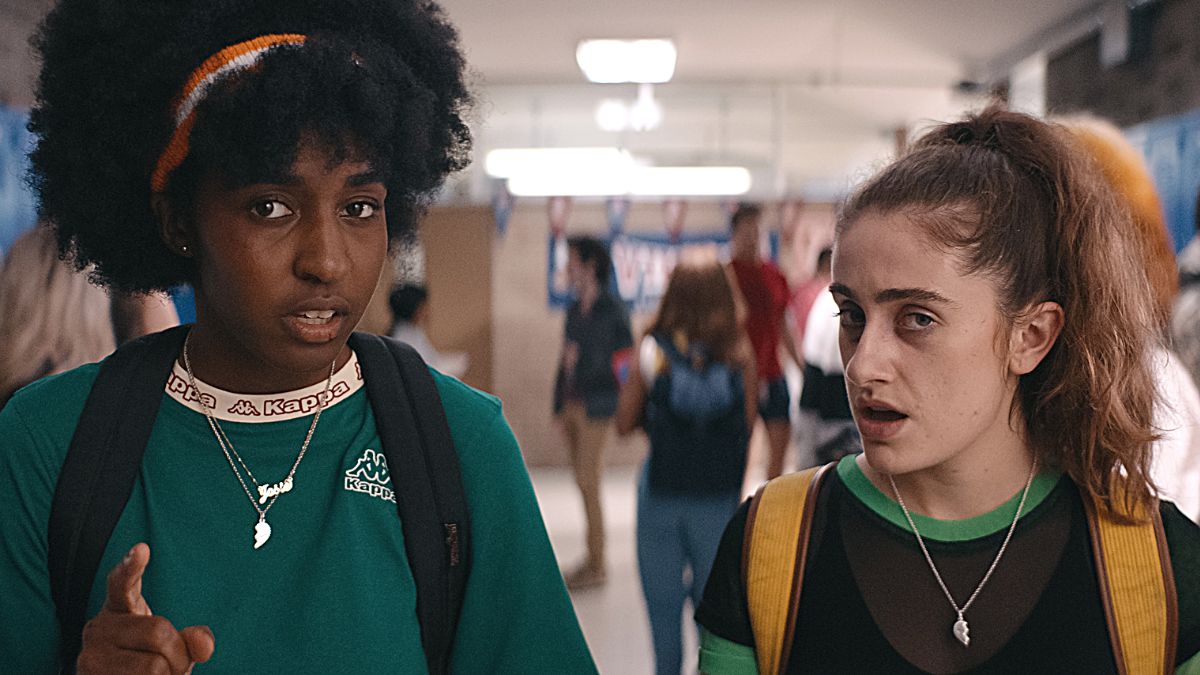
Emma Seligman’s follow-up to her neurotically, outrageously funny 2020 debut Shiva Baby sees her pair up with best friend and faithful leading lady Rachel Sennott once more, with the 28 year-old actress also stepping into the writer’s chair this time around. Bottoms is a deranged high school comedy about two maladjusted lesbians, PJ and Josie (played by Sennott and The Bear‘s Ayo Edebiri), who essentially start a self-defense club so they can hang out with and seduce cheerleaders.
Bottoms‘ biggest bet is one that ultimately pays off. The movie presents a world with a rule book that ever so slightly deviates from what we consider normal in our own world of reference, where kids beat each other up in school and repeatedly mention murder, suffering little to no consequence for their actions, unless the victim is the darling quarterback of the Vikings, Jeff (played by a hilariously theatrical and over the top Nicholas Galitzine). While there are moments where it wobbles on what tone to adopt given the thin line separating its reality from ours, it generally succeeds in creating a slight discomfort in the viewer which winds up being its biggest comedic asset. It’s never so outrageous that it becomes distracting, but it’s always just a step outside of the line of logic in a way that generates a healthy dose of bewilderment, curiosity, and hearty laughter.
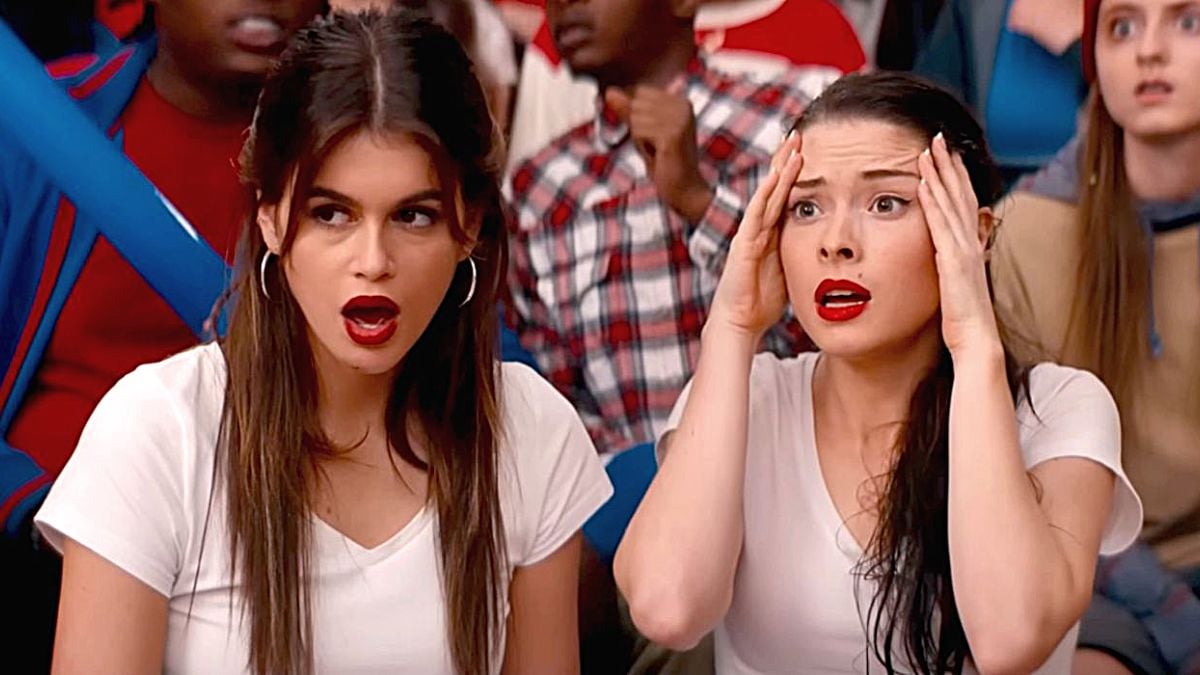
It’s a good thing Bottoms crafts its tone so well, because the plot is not exactly riveting. The girls manage to get popular, thanks to lies and deceit which eventually come out at the hands of a villain whose motive feels rather forced and weak. The fight club breaks up, forcing them both to recognize their mistakes and stop being so self-centered and self-serving. It all eventually works out, thanks to a far-fetched murder plot from the school’s eternal rival Huntington which brings the club back together for a greater purpose. It isn’t new, and you can trace and predict the relevant beats throughout before they happen, but it makes sense that Seligman and Sennott were more focused on nailing the eccentricity of their comedy and dialogues instead, so that that could be the differentiating factor of their film, rather than a twisty or emotionally complex narrative. And it works, the jokes and back-and-forth are so good that you’re happy to forget the shortcomings elsewhere.
It might move away from Shiva Baby‘s existential dread and incisive religious commentary, but it still delivers two deliciously awful, incredibly charismatic leading characters. Sennott and Edebiri, together or apart, are a treasure trove of physical humor and perfect line delivery, with just enough heart to ground their performances. In the case of Bottoms, although Edebiri is allowed more moments to dwell on her character’s vulnerability than her partner, they both very accurately tap into the longing, desperation, and awkwardness of the queer teenage experience. Ruby Cruz as the loyal lost puppy Hazel and Galitzine as the narcissistic himbo Jeff steal the show among the supporting cast – one for displaying the best character development, and the other for simply being hysterical.
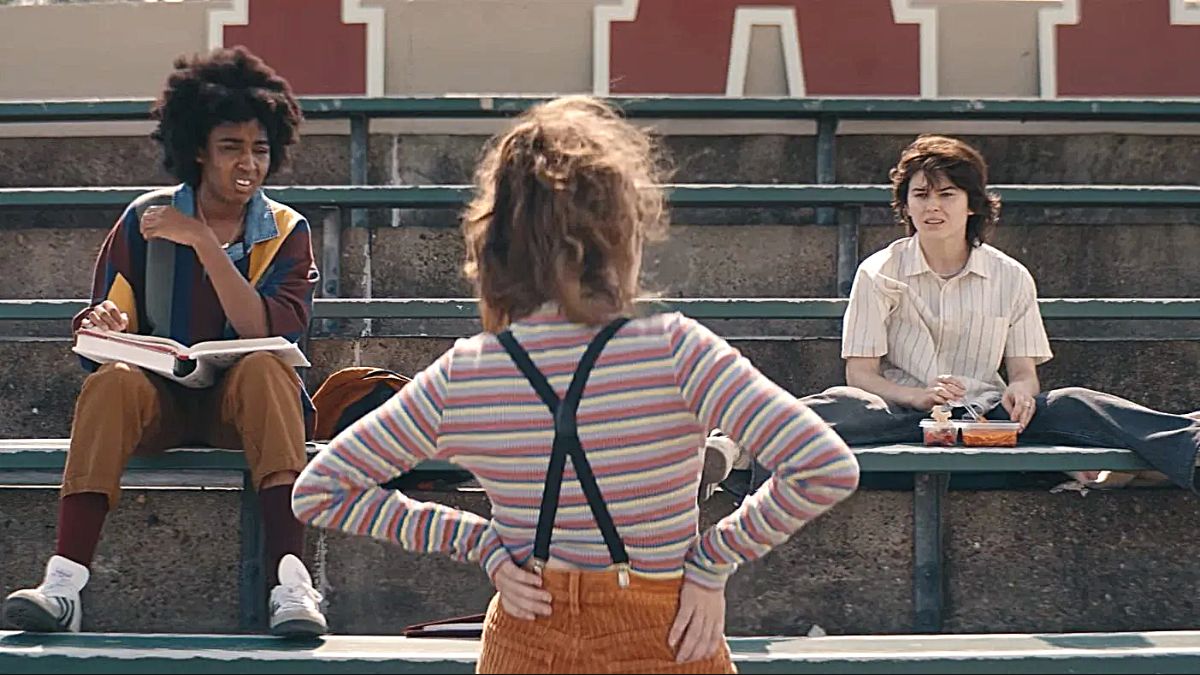
There’s also something to be said about Bottoms‘ post-feminist approach to the female experience. Although the film is very much of its time, reveling in its unapologetic gayness, and continuously celebrating the power of women, it is not afraid to go dark with its humor, poking fun at everything from school terrorism to eating disorders, and sexual harassment. They use “female solidarity” as a fake pretense to get girls to join their club when they really just want to get laid, and at one point PJ tells Hazel the first set of club attendees are ugly, only to turn around and tell a man she thinks “all women are hot.” All the while, there’s subtle and quite literally punchy commentary throughout about gender inequality and the ridiculous image the patriarchy has crafted for women.
Bottoms leverages humor and absurdity to present a genuinely multifaceted and refreshing perspective of teenage girlhood that at its core feels more real and attainable than the constructed heavy-handed box-ticking representation typical of the last decade. Even when some of its plot points are totally ridiculous and shocking, the movie finds the sweet spot between having unoccupied fun and standing up for something. It never lets go of one or the other enough to lose them, consistently walking the tricky line in between. Ultimately, however, it’s its leading duo that makes Bottoms such a fantastic movie, making you wish Sennott and Edebiri were cast in everything you watch from now on.
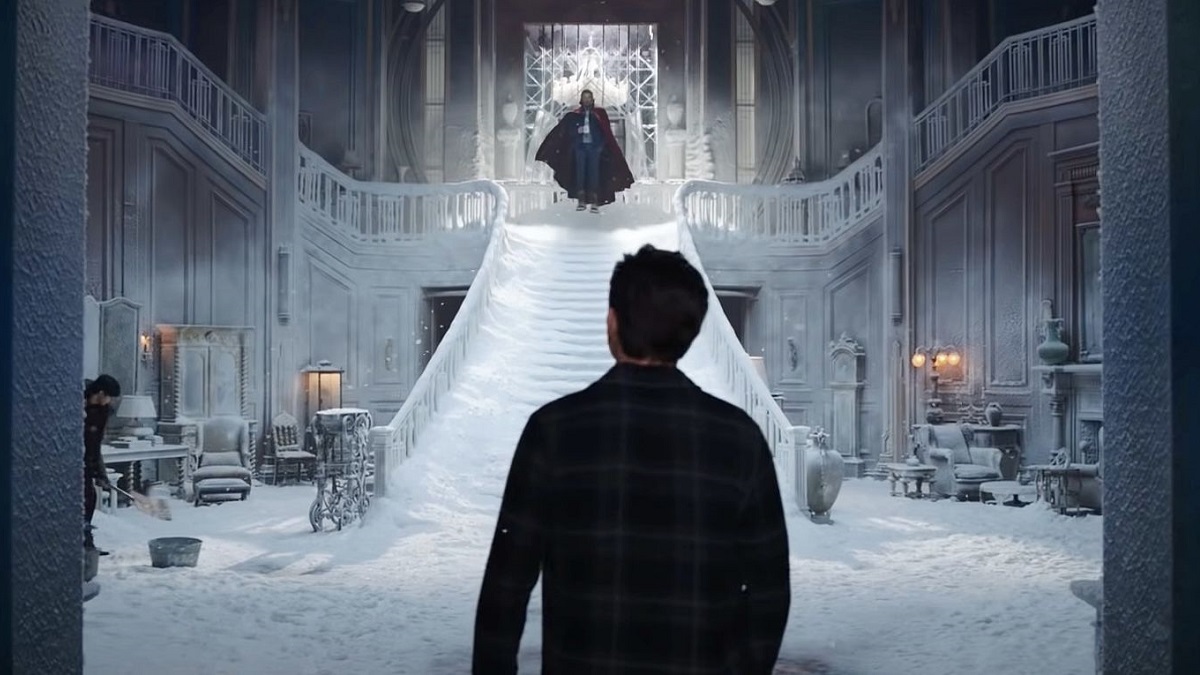
Another one bites the dust. Even as Netflix cruelly cancels fan-favorite originals or leaves other stranded in permanent purgatory, one of the streamer’s most popular series is coming to an end in the form of teen comedy-drama Sex Education, with the British show concluding as of its fourth season. Sex Ed has helped launch the careers of many of its cast, including Barbie and Doctor Who stars Emma Mackey and Ncuti Gatwa, as well as providing the most recognizable adult role for former child star Asa Butterfield.
Already known for his performances in such films as 2011’s Hugo and 2013’s Ender’s Game, Butterfield is now known internationally as adolescent sex therapist Otis Milburn, a role he’s played since Sex Education debuted in 2019. However, his career could’ve have gone in an entirely different direction if he had been chosen by Marvel Studios to become the face of the next generation of the MCU and was cast as one of the most iconic superheroes in comic book-dom.
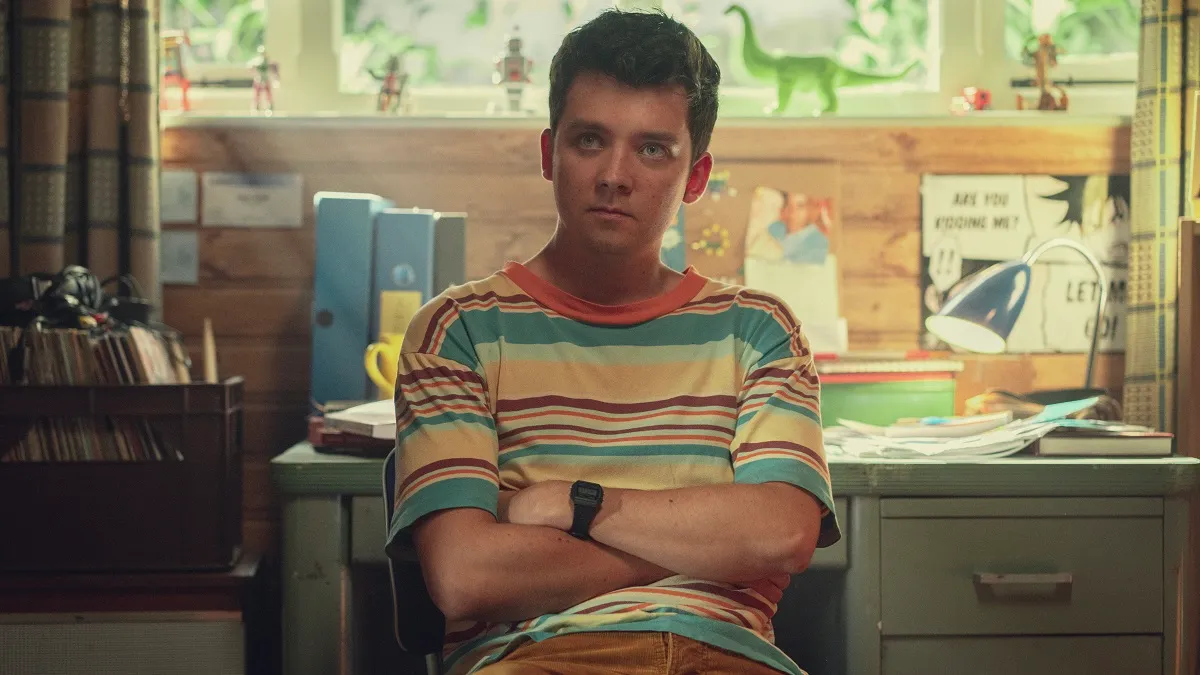
With the gift of hindsight, Tom Holland seems like such a perfect choice for the MCU’s iteration of the amazing wall-crawler that it’s hard to imagine Marvel didn’t just offer the job to him automatically. But given that the part of Peter Parker is one of the most coveted in all of Hollywood, naturally Marvel and Sony embarked on an epic quest to make sure they found the right man for the role. Eventually, the casting search became a two-horse race when the candidates were narrowed down to just Holland and Asa Butterfield.
Butterfield gave the auditions his all, but ultimately Captain America: Civil War directors the Russo brothers, Marvel president Kevin Feige, and Sony’s Amy Pascal elected to go with Holland and the rest is movie history. Several years after his near-miss with superhero stardom, Butterfield finally opened up about how he felt on losing out on Spider-Man during an interview with Collider in July 2020.
The actor — now 26 — sees the upside of the whole experience, as the knowledge that his career has enjoyed other highs since helps him deal with the “tough” situation:
“Every so often there’s a part [that you really want] and it’s a script you love, and you kind of put your heart and soul into it, and you don’t get it,” Butterfield explained. “And it is tough and it is sh*t, but I often find that something even better comes out of it at the end. And so in the case of Spider-Man, I did Sex Ed, because I wouldn’t have been able to do both of those at the same time.”
Butterfield has also taken something of a zen approach to the whole thing, remarking that he’s made peace with the fact that he understands he was simply not “the right person” for the job as his interpretation of the character was ultimately not what Marvel was looking for. He continued:
“I think as an actor and going out for roles, there’s only so much you can do and everyone’s gonna have a different take on a part and look at a character in different ways, have a different sort of performance, and you kind of have to stick with what you think. And if that isn’t necessary in line with what the director and the producers want, then it’s like, there’s nothing you can do about that. You might just not be the right person, and that’s out of your hands. And that’s something I’ve learned, something that I think is great to help me kind of get over it.”
What’s more, there’s certainly no hard feelings between Butterfield and Holland, as the former praised the latter for the “amazing things” he’s done with the role over his six appearances as the webslinger to date, feeling that events happened the way they did for a reason:
“Tom did amazing things with Peter and he had an entirely different portrayal of him and I think it’s worked so well in the universe and in that part, and I don’t think I could do it. So I think all things work out in the end.”
Now that Sex Education is over, of course, Butterfield has some time on his hands to try again for another superhero role. A cameo in the next Spider-Verse film as a Peter Parker variant from somewhere in the multiverse could be a hilarious and brilliantly meta place to start.
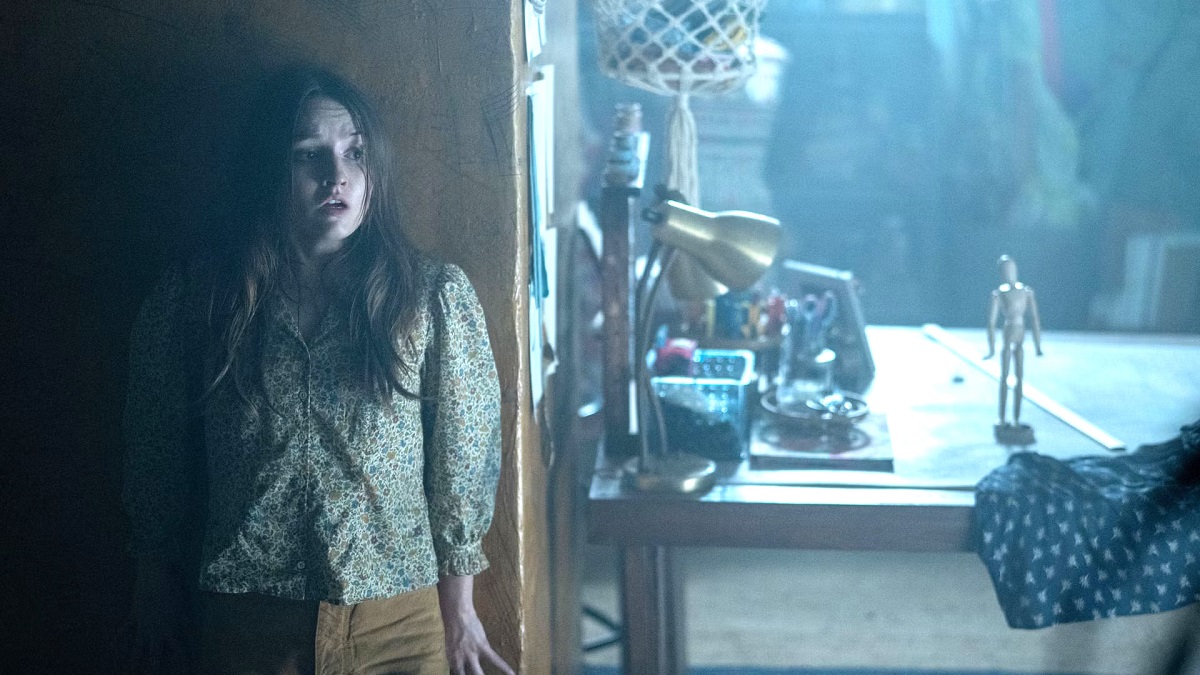
No stranger to cult favorites following his contributions as either a writer or producer on such favorites as Netflix horror comedy The Babysitter, Lovecraftian nightmare Underwater, the delightful Love and Monsters, the combustible caper Spontaneous, and meme factory Cocaine Bear, filmmaker Brian Duffield is destined to add another one to the collection when No One Will Save You premieres on Hulu this Friday, Sept. 22.
The high concept hybrid of home invasion thriller and sci-fi spectacular finds Kaitlyn Dever’s Brynn living in solitude at her remote country house, only for all hell to break loose when visitors from beyond the stars descend on her sleepy existence and turn it upside down over the course of one chaotic night.
As well as being another phenomenal showcase for its star, writer and director Duffield once again displays his mastery of subverting established genre norms and painting them in a coat of fresh and propulsive new paint. Make no mistake, No One Will Save You is sure to be a staple of the cosmic viewing diet for some time to come.
Ahead of the film’s release, We Got This Covered had the chance to speak to Duffield about No One Will Save You, how he honed in on a concept as ingenious as it is ambitious, working with Dever to develop a character that’s in virtually every frame, his designs on diving back into the world he created with Netflix animated series Skull Island and much more, which you can check out below.
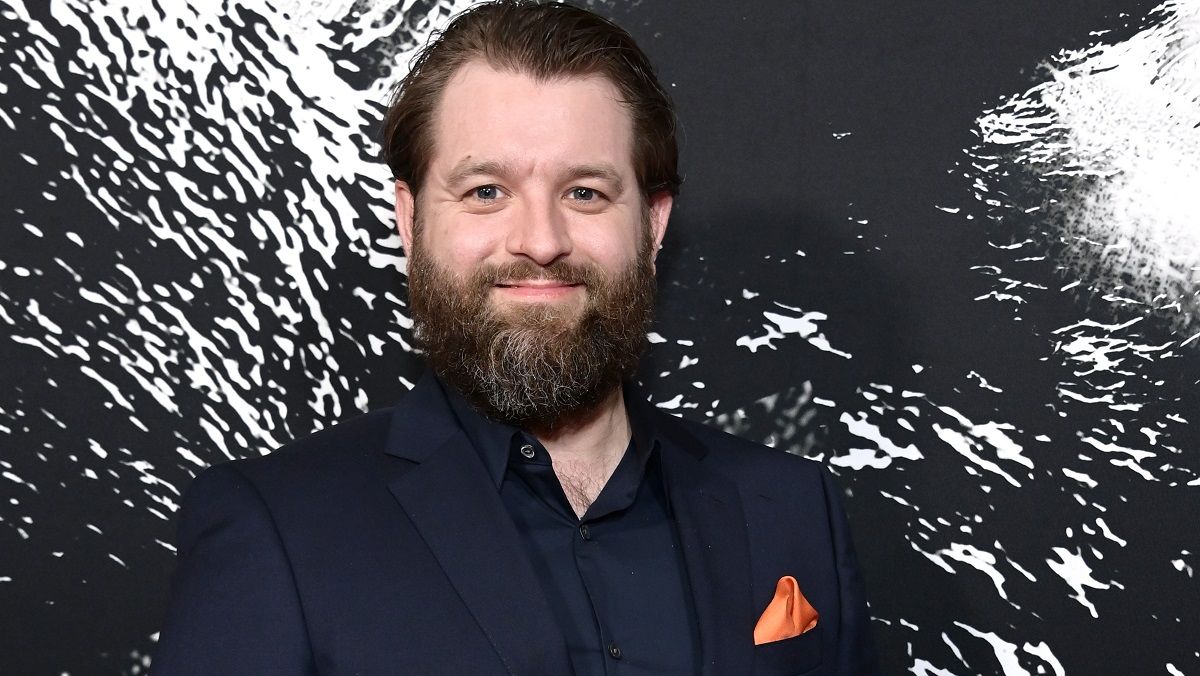
I’m already fascinated to know where the core concept originated from, because one of my takeaways from the movie was that it’s a little bit Signs meets A Quiet Place meets Home Alone meets Die Hard, but it’s also a completely character and performance-driven movie that’s pretty experimental as well.
Brian Duffield: Yeah, I think it kind of stemmed from I had the character of Brynn separate from aliens for a long time. And then I had this alien movie that would start, you know, at the start of the movie as opposed to the end of the movie, or the home invasion element.
And then they, for whatever reason, got mashed together in my brain where I was like, “Oh, this would be an interesting way to explore this character of Brynn,” instead of just doing the indie drama version, to put her in a sci-fi epic. And I really liked the idea of when the world ends, or when there’s these natural disasters or whatever, it interrupts everyone, not just the cool people, or the people that could actually fight back.
And so something about having a character that was reckless and isolated, and going through a lot emotionally outside of the alien thing, felt like an interesting point of view going into a movie like this, and especially because it made her so physically incapable of fighting back. That felt like a really interesting dilemma for a character to go through.
It’s only your second feature, and presumably this is one that you weren’t going to let go of as a director under any circumstances? Because it’s easy to imagine the bare bones of the story would hypothetically be transformed into something completely different – and a lot more verbose, we’ll say – if it were to be handed over to somebody or someone else?
Brian Duffield: I think I’m essentially done handing things over entirely. So I think everything I write, if it’s an original thing, it’s either for me or I’ll hire the people to do it. But you know, this one from inception, it was always something I wanted to direct if they let me. And then thankfully, people let me.
Was it the sort of challenge you relished as a writer, filmmaker, and producer putting the film together both in pre-production, shooting, and post or did it ever feel daunting, knowing that it doesn’t even attempt to lean on or adhere to not even sci-fi conventions, but a lot of standard cinema conventions as well. Because for a movie of this scale and budget that feels big without being massive in terms of cost, the ambition is off the charts.
Brian Duffield: You know, it was definitely spooky. But I think that’s where I get really excited to work. Um, I mean, I would really love to do something that felt easy, at some point. But I think part of the fun of getting to direct movies is that it’s the fun and the nightmares that you don’t know if you’ll get to direct another one. And so there’s a little bit of like, leave it all on the field, and just really, really swing for it each time.
I don’t know, just for me, it just seems like it’s such an opportunity, and a rare opportunity to get to do what I’ve always wanted to do. And so I think not taking those swings and not leading with ambition, it would be coming from a place of fear. And that’s just not how I want my career to go. I would really love to do like a very easy movie. I just don’t know what an easy movie would look like! But this one was definitely ambitious, but I think it was cool that once 20th Century got involved, there was never really anything from them about curbing the ambition.
So it just kind of felt like, like you said, we’re definitely going for a lot bigger movie than the budget, I would suggest. And then it felt like, you know, no one’s gonna give me $100 million to do this, they’re gonna give me this budget, which is way less than $100 million. And so I was like, “Well, fuck it, why not? Why not try and see what we can do?”
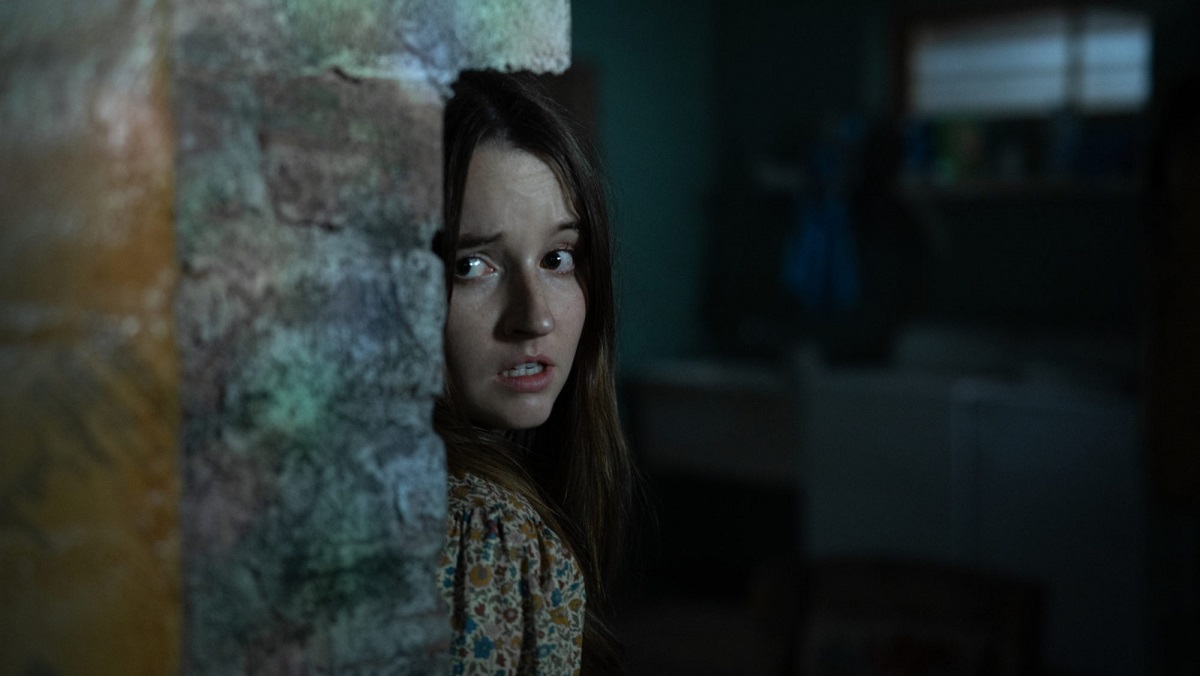
There’s less than 10 minutes of setup before all hell breaks loose, and even during that time there’s enough backstory for Brynn that audiences still have plenty of information to invest in the journey, but was that a difficult balance to strike in terms of both the script and the shoot to ensure that as much as the pace quickens right from the start and never lets up, the journey of the main character is always right at the very forefront of the story?
Brian Duffield: It’s probably easier in the script, just because you can write down specifically what people are supposed to take away from a given beat. And then, probably the hardest non-special effect part of the movie is definitely that opening chunk, where you’re trying to do a lot at once. You’re trying to set up this very interesting and complex character who on the offset looks kind of quirky and kooky, but is obviously not in that world once you kind of get to know what’s going on.
But then you’re trying to get everyone to be patient. Because, you know, everyone that’s clicking play knows that aliens are going to show up at some point. And so it’s kind of a little bit of a left-field curveball, where they are sitting through seven minutes of “this cute girl kind of going through her cute day.” And then when minute eight hits, everything goes to hell. Like you said, I was trying to give enough information that you felt like you understood some of her fears and struggles.
I think the likability thing was always very easy because Kaitlyn herself is so likable on screen, and in real life And then it was just getting your hooks in enough that you really cared about this character, so that when everything happens from minute eight on, you’re invested and you care about her, and you also understand that there’s some some pretty deep emotional mysteries to kind of unravel with her.
Kaitlyn manages to get put through the wringer and knock it out of the park in another incredible performance in a career that keeps filling up with them. What was the collaborative process between you guys as filmmaker and star to find the best possible version of what was on the page and deliver it on set, because it’s not an easy performance to give by any stretch especially with the limitations in the way that it’s told.
Brian Duffield: It’s a tough movie to have rehearsals for. Especially because she is so alone for so much. And so, instead of rehearsals, we just kind of chatted a bunch. And I think Kaitlyn wanted to go off and fill in the gaps on her own a little bit and internalize that that character, but we talked a lot in the weeks leading up to the shoot.
And when she signed on, of course, it was like… I think the fun of getting to work with Kaitlyn is how easy it is. And she comes extremely prepared, extremely specific. And so really, my job kind of just becomes modulating, and making sure I know where we’re coming from, and where we’re going. But even that, like she kind of already always knows, “This is where I fit in. This is where I’m going, I need to do this to lead into that.”
She’s such a gifted performer in terms of the nuance she’s able to convey, just with her face, and her physicality. And so I think it was something that she was really excited to dive into for that reason, that she could bring a lot of nuance to a very loud movie, and then also get to be so physical. So you know, she got to do all the training on wires and stunts and all the things that we let her do.
So I think she was really excited about creating a character that got to be so physical, but it seems like isn’t really an ass-kicker by any means. So that was really fun, I think challenging for her, but she makes a director’s life very easy, which is amazing for me!
For want of a better word, the aliens are very “classic” in their design, but they’ve got some surprises up their non-existent sleeves as well. Were you always writing with the intention of having that old school flavor in mind in terms of the look, and then flipping the script when it comes to their behavior and hierarchy not necessarily being something audiences have seen before or are expecting?
Brian Duffield: Oh, absolutely, yeah. For us, it was always the starting off with the Grays. It’s a design that I’ve always loved. And then I’ve been missing it in the last however many years. It also just felt really great, you know, because we are introducing our aliens so much earlier than I think people are accustomed to.
Getting to have a design that kind of immediately, Kaitlyn and the audience would understand what they were looking at. Even just from the little glimpses that we get towards the start of the movie. It felt like a really great starting off point. And like you said, it allows us to build on that design, and to subvert the design and to add our little bonus features, and tricks up our nonexistent sleeves, as you said.
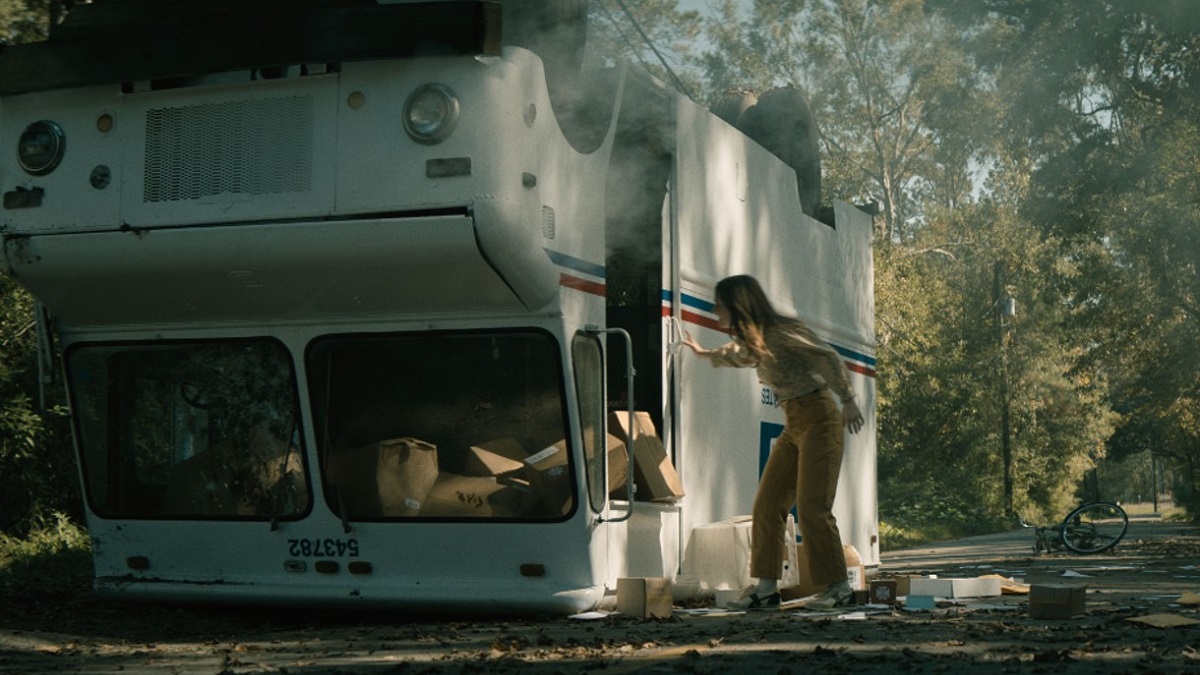
It’s the definitive alien in a way, but it’s become so embedded in pop culture that it’s almost being left behind as a result, except for maybe the occasional parody, which in a way enhances the atmosphere of the film because you’ve got the standard Gray popping up in this frantic thriller where they definitely do not want to be taken to your leader.
Brian Duffield: Right? Yeah, the way I kind of described it to people, when initially the studio was like, “Are you sure you want to do the Grays?” and I feel we get a dozen alien movies a year, and they’re all so so different. Like, this movie could not be more different than Landscape with Invisible Hand. But, that icon had been kind of missing from that.
And the way I told the studio is kind of like, if there was a dozen dinosaur movies a year, and none of them had a T-Rex for a decade. You’re kind of like, “Great, these are all amazing movies.” But at some point, I want the T Rex, you know? Even if it’s been the most popular forever, it just kind of felt like it got a little abandoned. Everyone’s trying to do their own thing, and their own spin, that it felt like it was time to bring our boy home.
And then again, I think if we had gone in the more, for instance, the District 9 look, I think that opening 10 minutes of the movie, it could prove to be pretty confusing to people, if they’re getting glimpses of something that looks like a bug walking around, you can imagine people wondering what they were looking at. And so having something that was so clearly iconic, I think it just helped everyone, because we have a lot of narrative hoops to jump through already, and so it just felt having something like that was so clear. And so I’m on the same page, I know this felt like a real gift that, you know, it’s kind of bringing everyone in as opposed to making people ask questions, when I don’t want them to ask questions!
Because a lot of times when the movie is asking questions, and is demanding patience from both Brynn and the audience, in terms of figuring out mysteries or what motivations are, and I felt like being really specific about when that was a good question to ask. And when there wasn’t a question asked, being really blunt and being like, “Here’s an alien, it’s an alien, it looks like your emoji, now go.”
Exposition can often be the death of sci-fi, but it would be an understatement to say that you’re not going to find much of it in this movie. At the same time, you know everything you need to know and it’s easy to figure out the who, what, and why driving all of the major players. It’s “show don’t tell” cranked up to 10, but was that always one of your major driving forces from day one to sort of showcase that it’s possible to do lore, mythology, aliens, and action and do it well, without having to explain a thing?
Brian Duffield: Yeah, I mean, it’s fun. It’s one of the things we kind of learned is that if you’re not verbalizing exposition, you can’t be too blunt with it. So I think in terms of the spoon feeding, there’s quite a bit in there, it’s just not verbal, and so you don’t hear it the same way, I guess. But that was always really important to us both in terms of Brynn’s backstory, which is probably more complicated, more challenging to discern and wrap your head around.
And then what the aliens do. One of the things from the get-go for us was always not having Brynn get to turn on the TV and be like, “Oh, in Tennessee, there were lights over Nashville” kind of thing, which is a classic trope of movies like this, but it felt for me, the scariest thing is if Brynn can’t figure out what’s going on, and doesn’t understand what’s going on. And so she’s kind of putting the pieces together on her own, and doesn’t like the answer she’s coming up with. But it felt like, the lack of exposition, to me, made it scarier for her where she really wants someone to tell her what’s going on. Because I think there’s a little bit of safety when you know what’s going on. And like, is it confined to this town? What else is happening in the world? Is there a safe place to go to?
And so I think by taking out that exposition, it felt like she’s at such a loss. That makes it scarier, and especially when she is confronted by the aliens, they are talking to her nonstop. Like, they’re not trying to be quiet. And so it was always fun in the design and in the sound process to believe that, to go with the aliens are explaining exactly what’s happening to her, and she just can’t understand it, which is also maddening and scary for her. There’s a lot of exposition that she just isn’t receiving. As opposed to us being cheeky, it just kind of felt more like, “Oh, it’s scary if she really is working hard to figure out what’s going on and is not being given answers.”
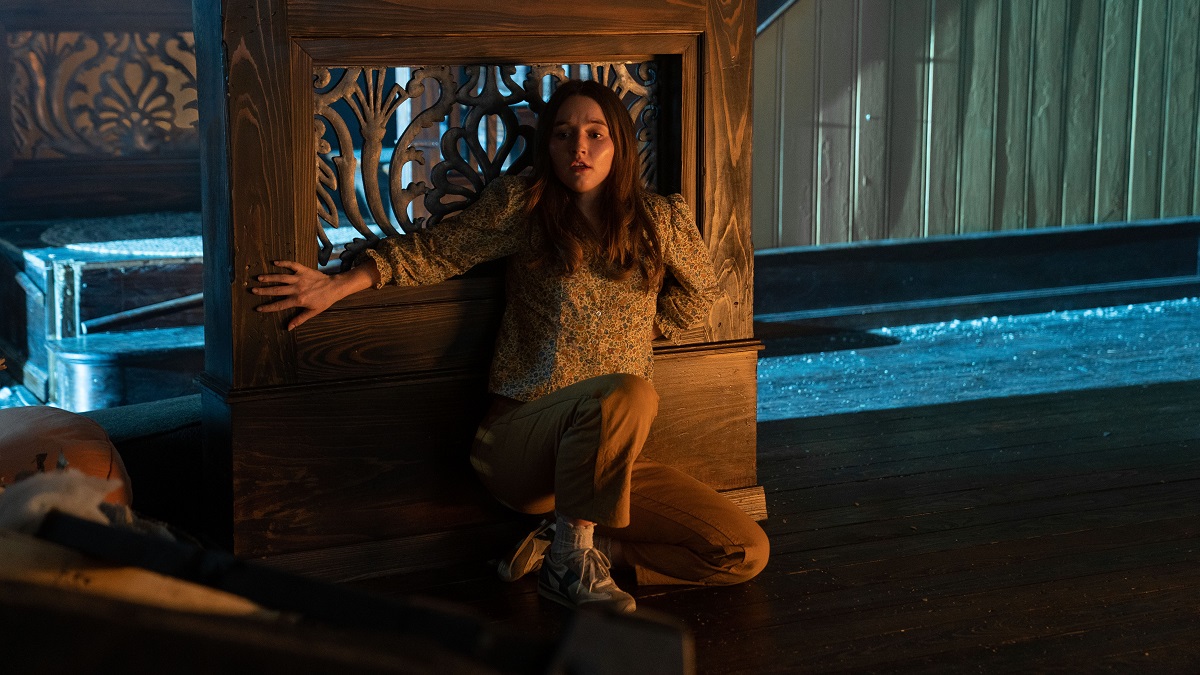
As a result, that puts even more focus on the sound design and the score in particular to enhance the experience. Presumably, that’s something you wanted to fine-tune to perfection, because both aspects are basically the second and third main characters in the movie.
Brian Duffield: Yeah. Oh, absolutely. Yeah, that was critical. Our score, I think, does so much heavy exposition lifting. We always would be very specific, there’s themes that when you hear the theme that’s very specific, it’s supposed to trigger memories of things that have happened earlier, or connect worlds as it were.
And then the sound was really fun, to get to create this language with with our aliens, because that was one of the fun things about the iconic Grays is that they are usually silent. They don’t really talk. Even in Close Encounters, those aliens never speak. And so it felt like that was a really fun opportunity to get to design a language that wouldn’t be subtitled, but hopefully the audience and Brynn kind of pick up familiar sounds and dialects that she might not understand what they’re saying.
But there’s a familiar kind of pattern. So it was fun getting to talk about what they were saying with the post team, and then design it in a way that Kaitlyn’s character could kind of go “Okay, they’re saying that thing from earlier, I’m recognizing these different sounds that they’re saying.” So it’s not just, you know, clicks and whistles, there’s hopefully an intelligence there that you’re like, “Okay, these guys could have flown all the way here.” And then when they do walk in, they’re not expecting much of a challenge because they are so superior to everybody. So getting to play a little bit with that arrogance, too, is fun.
It both is and isn’t the movie that audiences might be expecting if all they’ve got to go on in the trailer, but embracing and subverting those tropes and trappings – sometimes in the space of the same scene – never feels unnatural or forced. It’s sounds like an oxymoron, and it’s intended as a huge compliment, but it feels like a love letter to classic sci-fi that ripped up the letter and threw it out as soon as it had been written.
Brian Duffield: Oh, sure! Yeah, I mean, I definitely am passionate about the genre. And I think it was less about ripping up the letter. If anything, it’s like trying to jam as many letters as possible in! Like I said about leaving it all on the field, I think there’s something really exciting about making a movie when you have to assume you won’t get to make another one.
And so, getting to make an alien movie, you’re kind of like, “Well, I don’t want to not have a flying saucer. I don’t not want to have these things.” Who knows if we’ll ever get back to make a second alien movie? It’s not that likely. Like, a lot of people don’t make two alien movies. And so it was just kind of like, “Okay, well, I have all these things I want to put in there.” And there are things that didn’t make it in, too, but it was kind of fun to build it out that way where it was like, “Okay, so what makes this situation worse for Brynn? At all times?”
And certainly, the flying saucers are really good example of that, that’s not in the trailer. But I think everyone assumes, you know, gray Alien UFO kind of thing. I really wanted a UFO. And that was fun to subvert the UFO, like we do. But also, it was great, because the first time Kaitlyn sees the UFO, she kind of instantly understands what the threat of the UFO is, because of iconography. So without being told what it can do, as soon as she sees it, she starts losing her shit, because she knows.
And based on things that have happened earlier in the movie, you know, the light beam is going to come down. So getting to play with what the audience knows going in, and giving them what they know going in, and then getting to subvert it a little bit actually, like you said about the exposition, it helps. When Kaitlyn’s freaking out everyone goes, “This is the problem with this UFO that we’ve never seen before.” But as soon as we see it, we understand what is at stake. And what Kaitlyn needs to do to get out of there. And so that just felt like a fun thing, that your exposition is kind of the last 100 years of movies, as opposed to a character having to do too much.
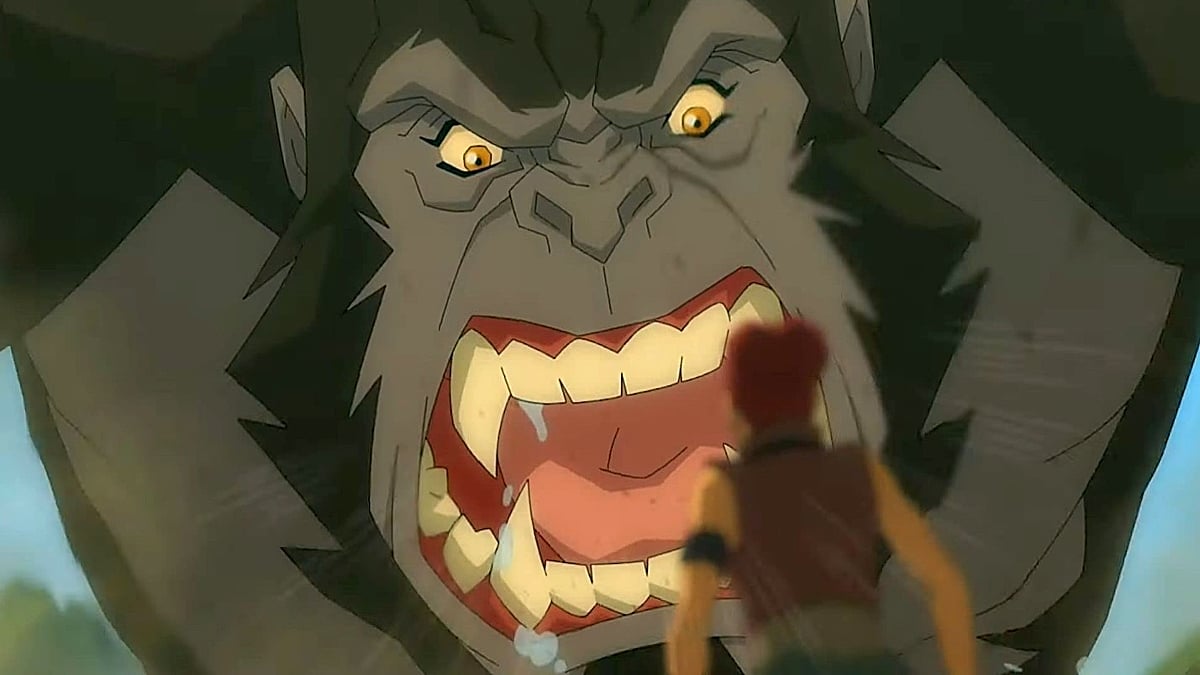
You recently dived into the world of animation with Skull Island on Netflix, which is of course a series focusing on one of the most iconic monsters there’s ever been. You’ve done kaiju and Grays with your most recent projects, but are there any other classics, legends, icons, or IPs you’d love to get your hands on one day?
Brian Duffield: Yeah, I mean, just because I’ve been vocal about this after Skull Island, is that I’ve been really pushing to do an animated Godzilla movie. I don’t know if it’ll happen or not. But my hunch is it probably won’t, because it’s pretty out there. But that was one where I thought, “I have a really good idea for an animated Godzilla movie that I really would love to do.” And I’ve talked to Legendary about it, because I have the relationship I have with them after Skull Island.
But we’ll see if it happens or not. I don’t think it will. Well, who knows? But that’s one that it’s like, it’s Godzilla. In 20 years, I could wind up doing it, too. So I have a very specific Godzilla thing I wanted to do an animated movie for, but that’s more or less the only only thing I’d say. I like playing in my own sandbox usually. So I don’t dip my toes into other things too often, but I had a really great experience on on Skull Island. And I’d love to do more with those guys.
Godzilla exempt, then, if you could make any project of your choosing however you want to make it, what would be at the top of your list?
Brian Duffield: Oh, I have… I can’t say what, it’s original. But I have a movie that I’ve been working on with my friends at Lord/Miller. That’s kind of a bigger fantasy-esque kind of thing. So my answer would be that. That would be really fun. It’s really big and unique. But that would be really, that would be the one that I’m like, “Oh, I could retire after that one,” kind of.
No One Will Save You premieres on Hulu this Friday, Sept. 22.
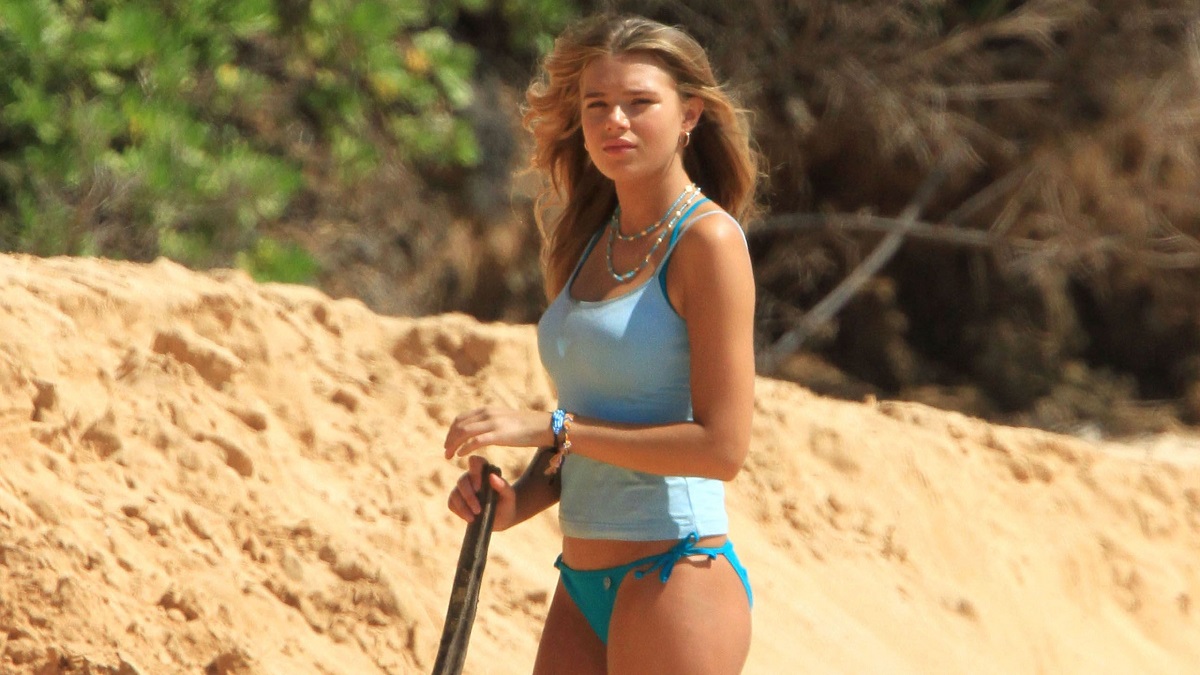
More than 40 years after its release, 1980’s survival drama The Blue Lagoon found itself placed back under the spotlight after the revelations made in Brooke Shields’ documentary Pretty Baby, where the actress reflected on the filmmakers attempting to “sell her sexual awakening” on film despite the fact she was only 14 when production began.
It was only one of several uncomfortable experiences for Shields during her formative years in the industry, but the tainted legacy of Blue Lagoon didn’t stop the 1908 source novel from continuing to be repurposed for the screen in 1981, 1993, and finally in 2012 when The Awakening was released as a Lifetime original movie.
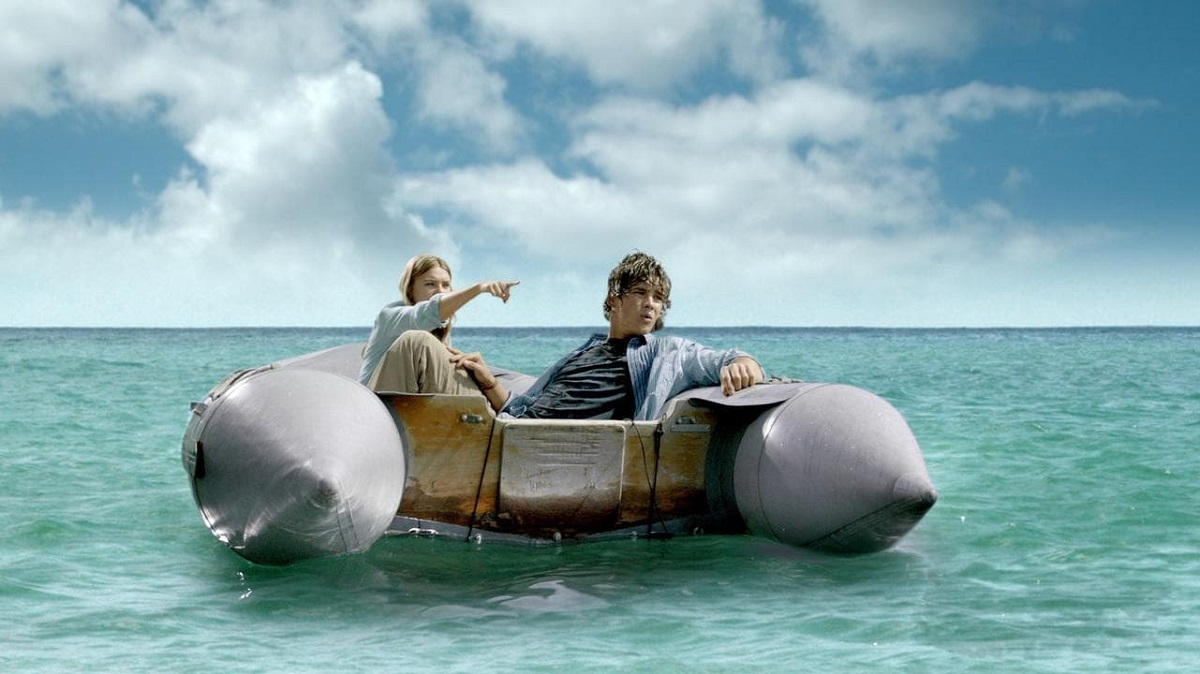
Deviating from the norm by virtue of being set in the modern day, a fresh-faced Brenton Thwaites stars alongside Indiana Evans in the two lead roles, although the producers did at least learn the lessons of the past seeing as the latter was 21 years old when it landed on screens to be greeted about as tepidly as you’d expect from one of the basic cable network’s many, many, many low budgeted exclusives.
Strangely, though, Blue Lagoon: The Awakening has become stranded on Netflix’s worldwide watch-list after being added to the library in multiple markets, with FlixPatrol having named it as a Top 10 hit in several countries around the globe.
As the sixth adaptation of its inspiration and perhaps the most forgettable, it’s not exactly one that sticks long in the memory, but it’s nonetheless curious that it’s been embarking on a resurgence not so long after Shields’ reflected on her questionable experience on the most famous iteration of the story.
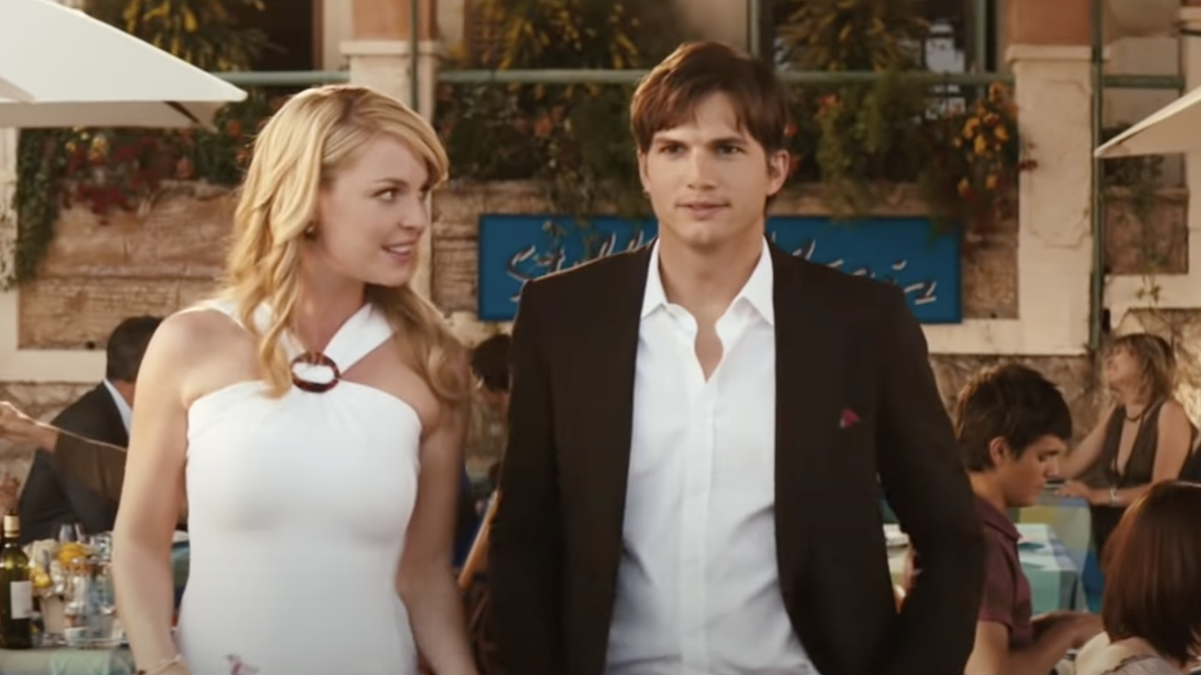
Watching Killers rise to the number two spot on Netflix’s Top 10 feels like déjà vu. Its re-emergence in 2023 and its initial success in 2010 share a common catalyst: Ashton Kutcher.
This article explores how the uncanny influence of its lead actor managed to catapult Killers to theatrical and streaming success in two different decades.
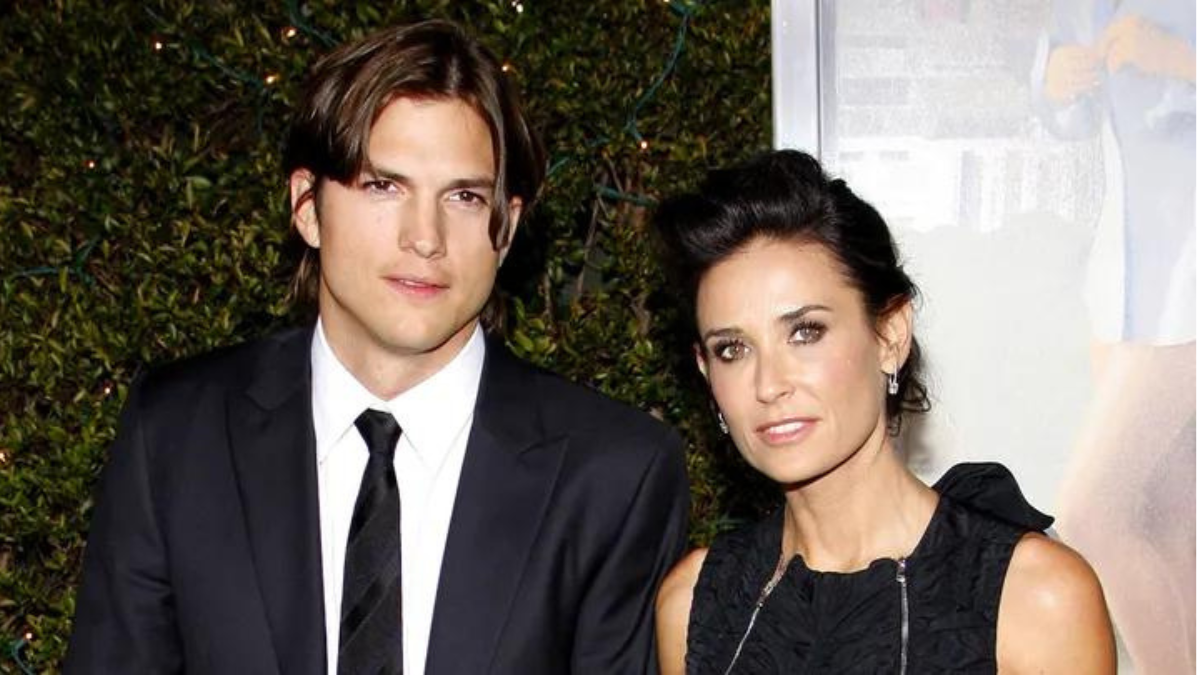
The past and current success of Killers seems to ride the massive waves of controversy occasionally created by its leading man. Shortly after its theatrical release, allegations of infidelity involving Ashton and his then-wife, Demi Moore, found their way into the pages of Star Magazine. He responded by publishing a strongly worded denial on social media.
I think Star magazine calling me a "cheater" qualifies as defamation of character. I hope my lawyer agrees.
— ashton kutcher (@aplusk) September 1, 2010
Eventually, an indiscreet night at Danny Masterson’s bachelor party culminated in marriage-ending headlines. However, the bad press generated a good box office for the star. Despite Killers’ flimsy plot and an astonishing lack of originality, the movie earned a global gross of $98.1 million against a production budget of $75 million. Ashton’s appeal and the scandal surrounding him played a pivotal role in its relative success.
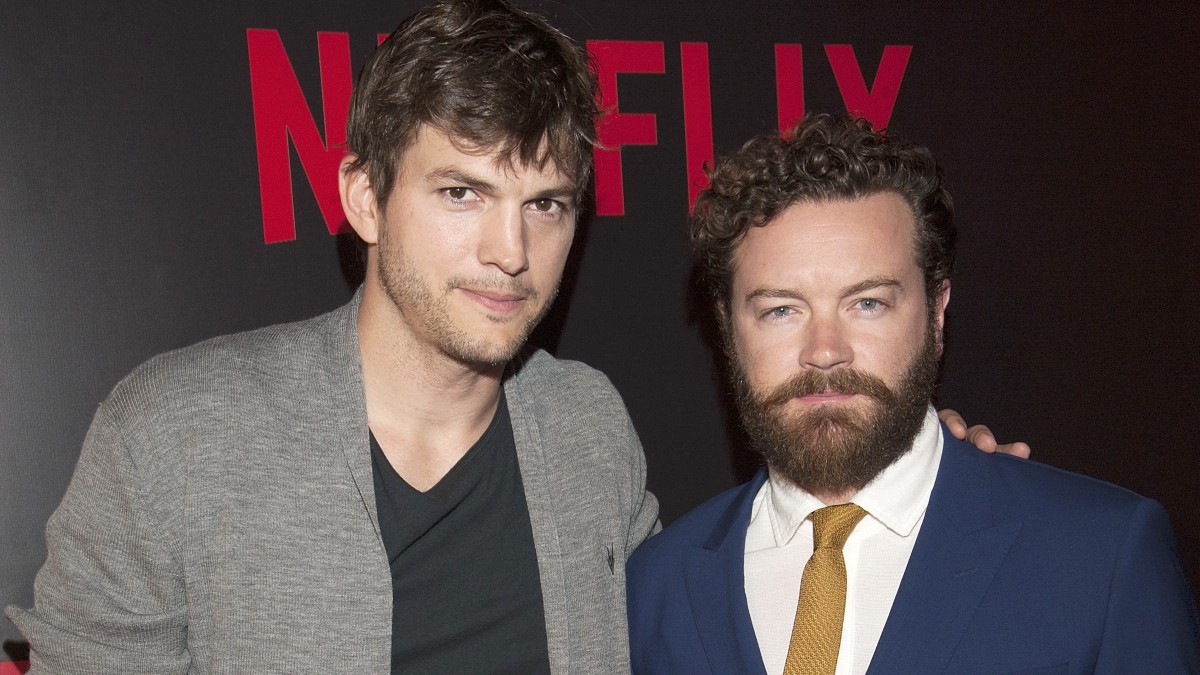
Fast forward to 2023, and a fresh scandal involving Ashton and his current wife, Mila Kunis. The couple is facing a backlash from the public due to their contentious letters seeking leniency for Danny Masterson. Like clockwork, Killers has once again found its audience, baffling critics who universally panned the movie. Once again, his magnetism and a media debacle drive interest in the film. Its resurgence poses the intriguing question: might Ashton return for a sequel?

Killers tells the story of Jen Kornfeldt (Katherine Heigl), a woman who travels to the sun-drenched shores of southern France to recover from a difficult break-up. During the trip, she falls in love with Spencer Aimes (Kutcher), the man of her dreams. They marry and settle down in an idyllic suburb. However, an attempted assassination shatters their idyllic life, and Spencer must come clean about his past. He reveals he is a professional assassin and lets Jen know there is a bounty on him. Killer is a chronicle of clichés told with stunningly awful dialogue. Case in point: “Let’s just say I work for the blah blah blah, and they gave me a license to blah.” Ironically, “blah” was critics’ go-to descriptor to warn viewers about the perceived mind-numbing tedium of Killers. Yet, despite the lambasting, the movie did surprisingly well.
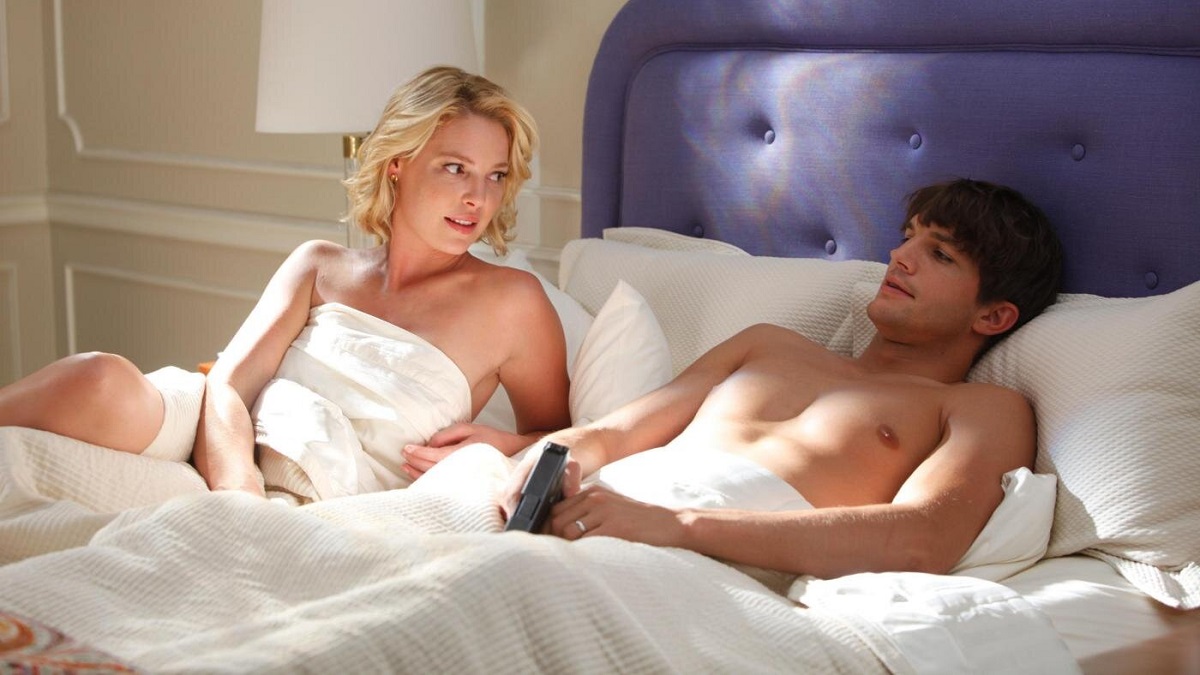
Killers is an unpretentious action-comedy that offers the simple pleasures of laughter and love amid some high-octane scenes. Like Ashton Kutcher, Katherine Heigl was a household name in 2010, ensuring that the movie would at least pique the interest of fans. Then as now, it was released in a time of economic instability and the film’s predictability was just what the doctor ordered.
Killers‘ endgame is not social commentary or offers profound insights into human nature. Its sole mission is to entertain. It is a star-driven film willing to meet the needs of film fans who like a bit of silly fun now and then.
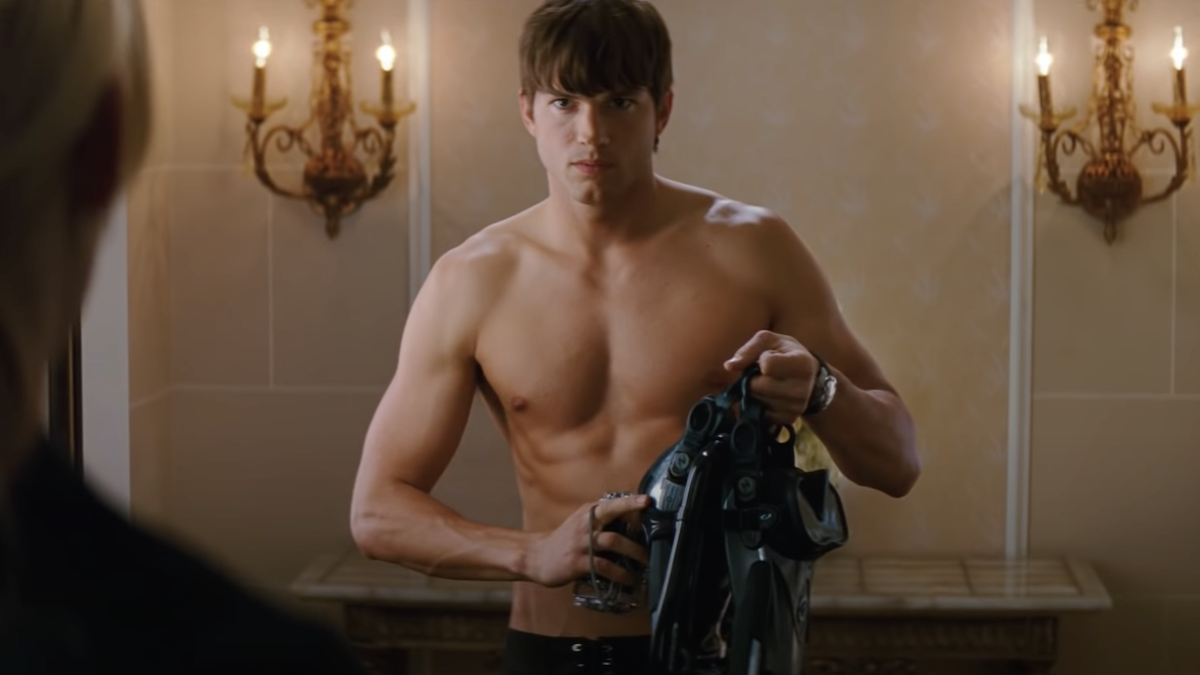
Killers’ success never fails to baffle the naysayers because they don’t understand the cinematic palate of the rom-com fans. Ashton’s razor-sharp business acumen makes it easy to forget that a film like Killers is on-brand for him because it’s silly fun with a good-looking guy. What’s not to like?
A simple glance at Ashton’s IMdB movie credits reveals a pattern in the roles that propelled him to stardom: beautiful moron Jesse Montgomery in Dude, Where’s My Car?; daft hunk Kelso on That 70s Show; and pretty boy prankster-in-chief on Punk’d. Movie fans seem unconcerned with the substance of his films because back in 2010, Ashton was shamelessly self-indulgent eye candy whether he wore a trucker hat or a tuxedo. He was the real-life version of the character Drew Baird (Jon Hamm) from the “The Bubble” episode of 30 Rock. Thus, many movie lovers are content with feel-good escapism wrapped in a handsome yet relatable package. No matter how absurd and derivative his movies are, Ashton invariably ends up laughing all the way to the bank.
For this reason, despite being savaged by critics, Killers enjoyed moderate success at the box office. The film earned $15.8 million during its opening weekend due to the popularity of its lead actor. At the time, Ashton was half of a Hollywood power couple and a prominent presence on the hottest social media app back in 2010, Twitter. Even amidst negative press, seeing him continues to evoke fond memories for his fans, who are shame-watching Killers in droves despite his ethically elastic support of Masterson.
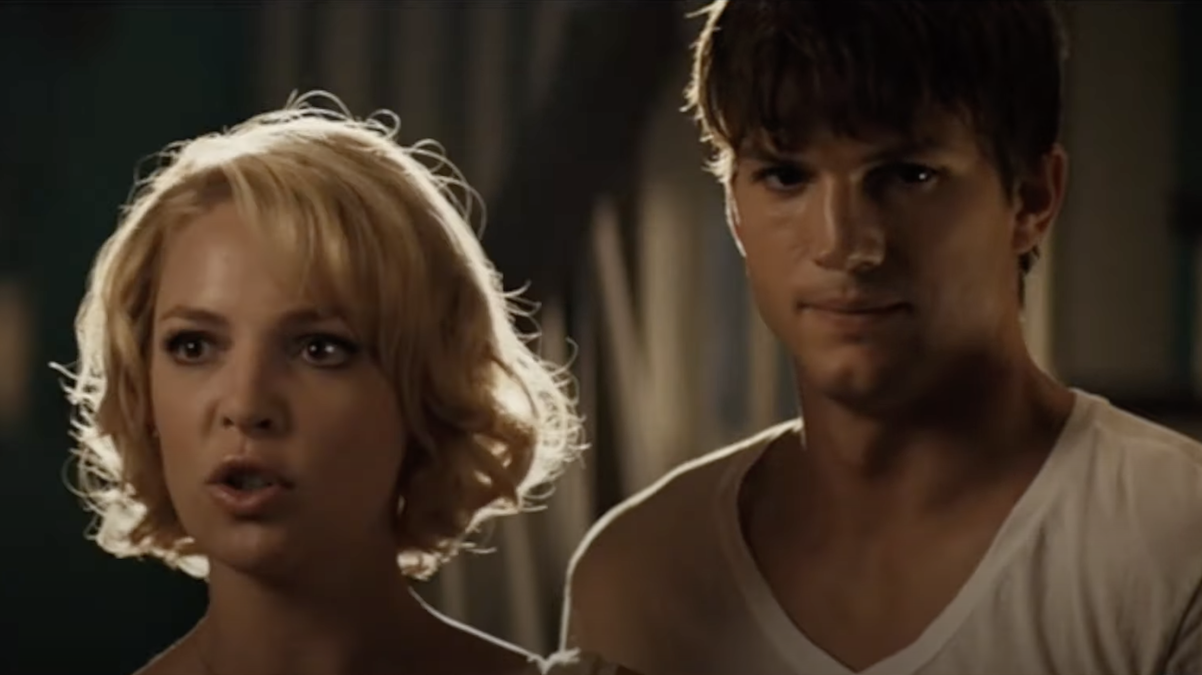
Killers’ ability to become the second most-watched film on Netflix may present an economic opportunity. The film has an audience, and its newfound popularity suggests Ashton’s pretty privilege is undiminished by scandals, low scores on Rotten Tomatoes, and Father Time. Earlier this year, he starred in Your Place Or Mine, so he is still interested in playing a romantic lead despite his dad’s status and high-flying career as a venture capitalist. A sequel to Killers could happen.
But is there truly a need for a Killers 2? Those who view the original film as unapologetic escapist nonsense would say once was enough. However, even viewers who enjoyed the film might agree that it has squeezed all the proverbial juice from the lemon.
Killers is streaming on Netflix.
This article contains spoilers for Avatar: The Way of Water.
Avatar: The Way of Water provided a worthy continuation to the world of Pandora, introduced meticulously by James Cameron 14 years prior. While the essence of the series’ two heroes, Jake and Neytiri, carried over from one movie to the other, there were a few new elements to their clan that brought their own special kind of magic to the story.
Viewers had last seen the couple happily mated for life at the end of Avatar after stopping the Resources Development Administration led by Colonel Quaritch from violently occupying Pandora. Beyond the introduction of the Metkayina, an aquatic Na’vi clan who live in Pandora’s reefs, the biggest change to the couple’s lives in The Way of Water is that they now had a few mini-mes running around with them.
In the years between the 2009 movie and its 2022 sequel, Jake and Neytiri added five members to their family, some biological children, and some they adopted. Speaking to Empire, director James Cameron explained why it was important to give his protagonists a family in this second installment.
“I look around – I don’t want to specifically say the Marvel Universe, or the DC Universe – at current fantasy and science-fiction and all these heroes seem unbound in the mire of relationships, the stuff that pulls you down and clips your wings, that stops you running around and risking your life. I thought, ‘What if I take these incredible characters of Jake and Neytiri and give them a family?’ That gives them feet of clay right there.”
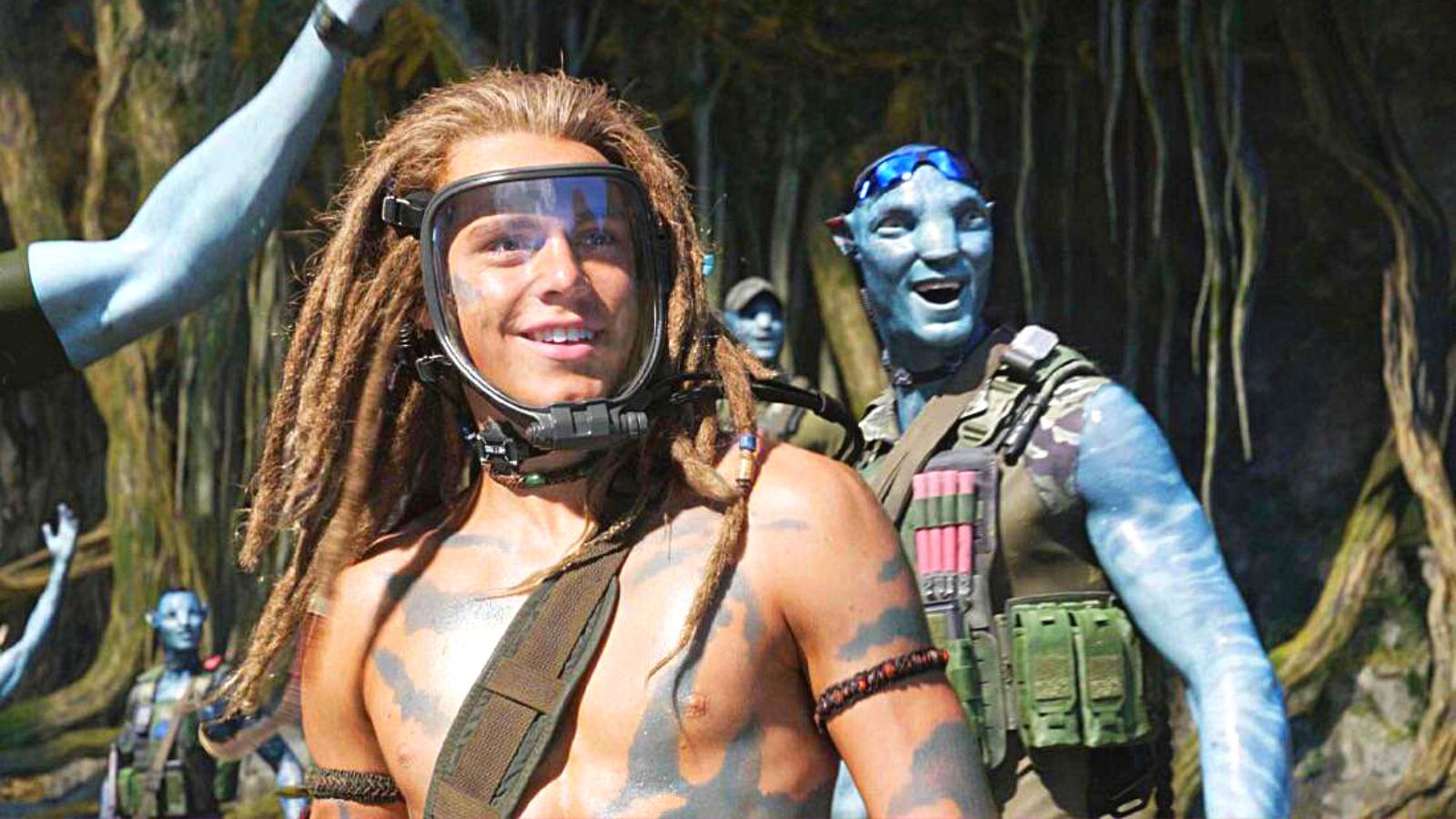
Spider, whose nickname comes from his natural ability to climb, is a human teenager who is like a brother to the Sully children. He was born in Hell’s Gate, the base for all human colonial operations, and is 16 at the start of The Way of Water. Spider’s mom, Paz Socorro, died in the final battle in Avatar, and his dad, the villain of both films Colonel Quaritch, was killed by Neytiri. Orphaned, and too small to be sent back to Earth, Spider was taken in by humans Nash and Mary McCosker, but always preferred to be with the Na’vi in Pandora, particularly Jake and Neytiri’s children.
They grew up together and became like siblings, but Neytiri always found it difficult to separate Spider from the rest of the human species, for which she naturally held contempt, due to the trauma from past hostilities. The matriarch’s anxieties are somewhat confirmed when Colonel Quaritch is essentially brought back to life through a Recombinant (human/Na’vi hybrid soldier), who has been implanted with the man’s memories and personality traits.
Spider is played by Jack Champion, best known for his role in 2018’s The Night Sitter.
Related: Avatar: The Way of Water Cast on The Escapist
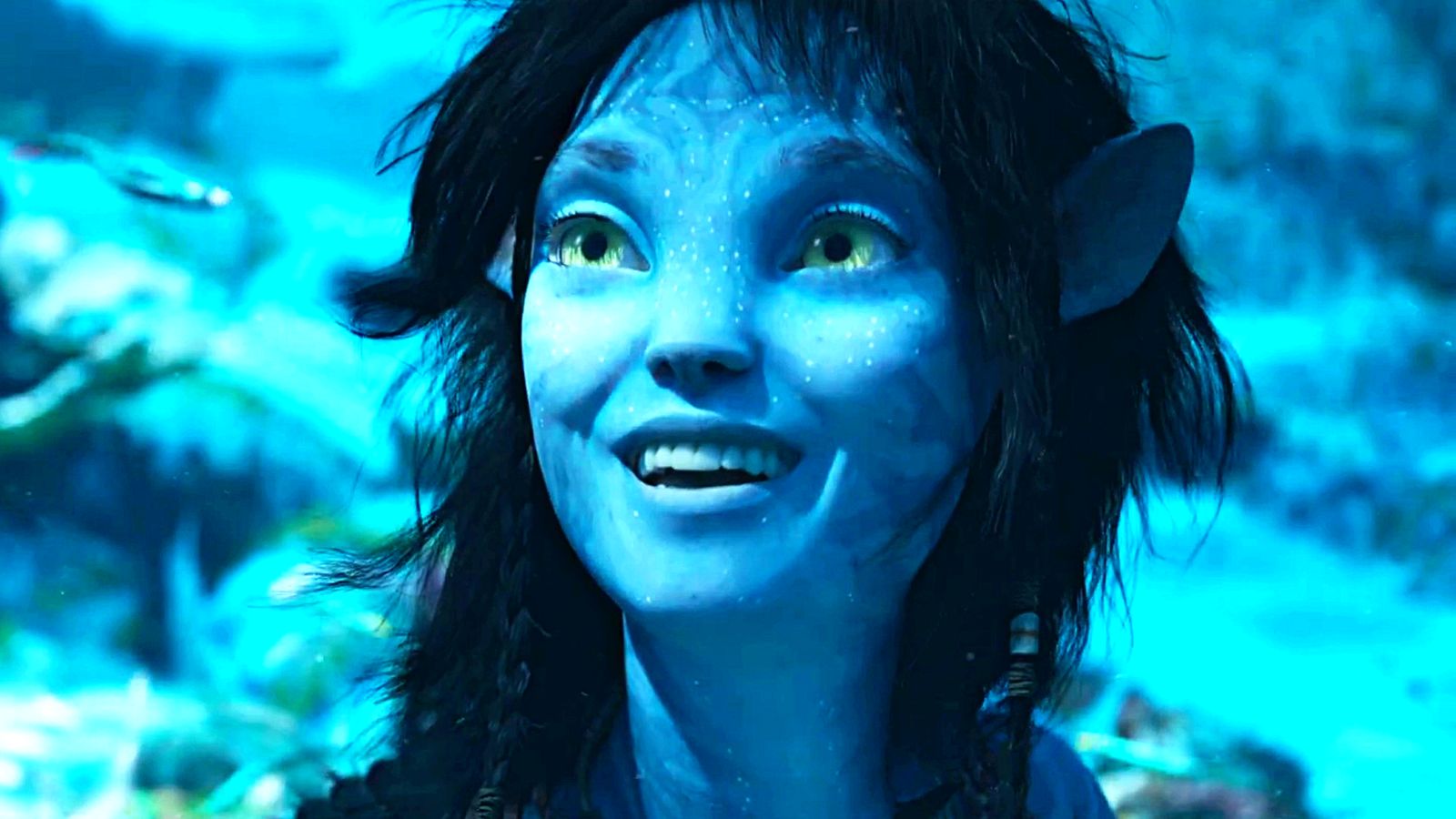
Kiri is Jake and Neytiri’s adopted 14-year-old daughter. Although we know Kiri is the daughter of Dr. Grace Augustine’s avatar, little is known yet about her origins, namely who her father is. In The Way of Water, she is portrayed as having a strong connection with Eywa, Avatar‘s version of Mother Nature, as she’s able to feel and communicate with her to a degree. In the film, Kiri tells her adoptive father that she “feels her,” and can “hear her heartbeat.” As Grace died at the Tree of Souls, meeting Eywa in the process, fans have speculated that Kiri could either be directly related to the powerful entity or a reincarnation of Sigourney Weaver’s character.
Like her siblings, Kiri is also part avatar, which is why she has eyebrows and five fingers (the real Na’vi only have four). She and Spider share a special bond based on their family history and separation from their biological parents, but Kiri is also very close with her baby sister Tuk. She is played by Avatar returnee Sigourney Weaver, who played Grace in the first movie.
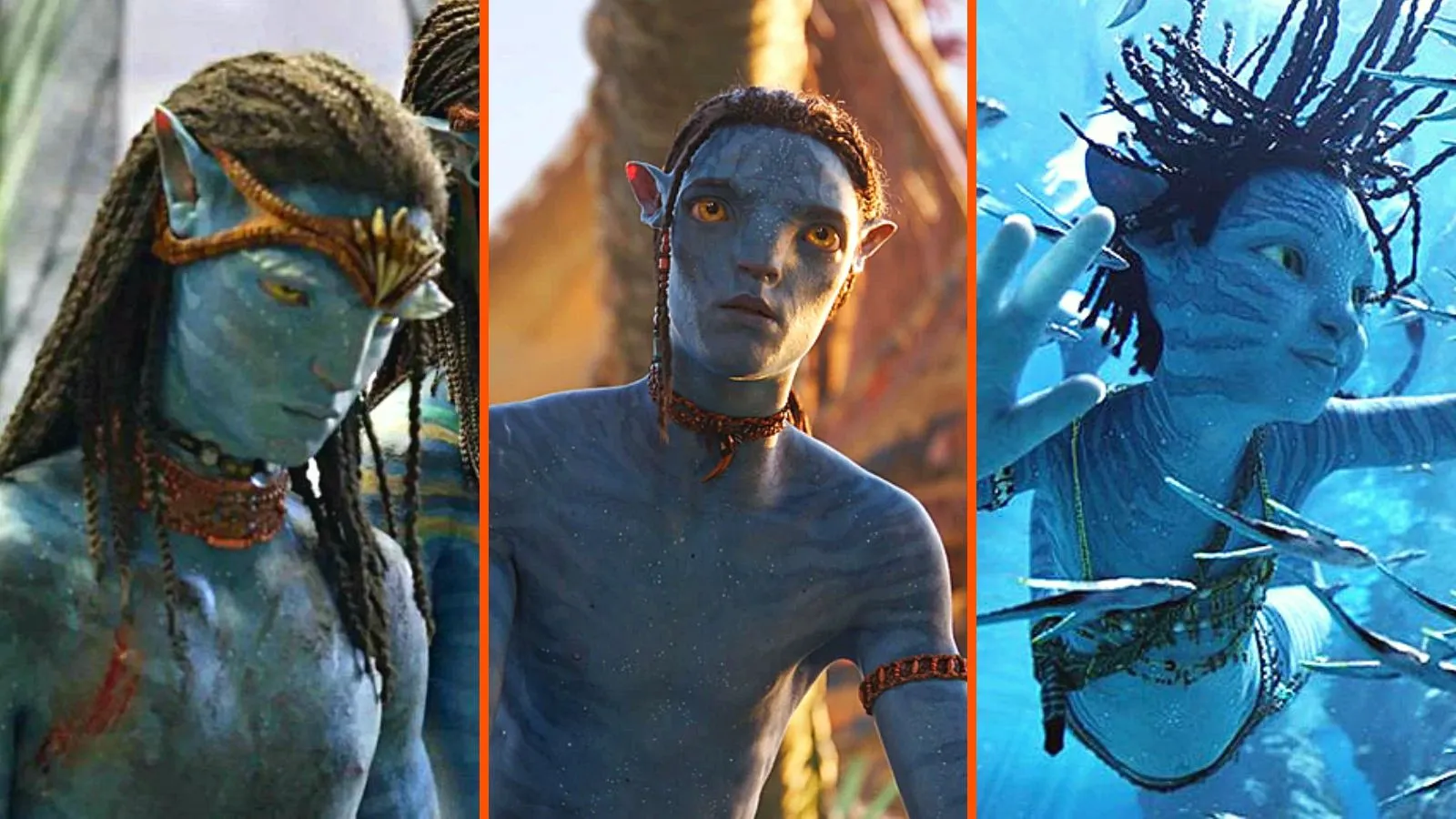
Neteyam, Lo’ak, and Tuktirey are Jake and Neytiri’s biological children. Neteyam is their oldest son, Lo’ak is the younger brother, and Tuktirey is the couple’s youngest daughter.
Neteyam is 15 in The Way of Water, and as Jake and Neytiri’s oldest son, he is next in line to lead the Omaticaya. Because of Neteyam’s dutiful personality, which inspires trust and a level of preference in his parents, Lo’ak is incredibly jealous of him, and the two often clash. He’s played by British actor Jamie Flatters.
14-year-old Lo’ak is a stand-out character in The Way of Water. He’s the rebellious son, always getting scolded by his parents, and even putting his siblings in danger thanks to his hunger for adventure. He’s also the only of Jake and Neytiri’s biological children with eyebrows and five fingers, like avatars. As a result, he feels misunderstood and singled out, leading in him to act out.
After moving to Awa’atlu, Lo’ak is rescued by a tulkun, a sentient whale-like creature from Pandora, named Payakan. The two bond, but the leader of the Metkayina clan, Tonowari, tells Lo’ak that Payakan has been exiled from his pack for murdering someone, something which is not allowed among its species. He is played by Britain Dalton, best known for playing a young Nathan Drake in the video game Uncharted 4: A Thief’s End.
As for Tuktirey, she 7 years-old in The Way of Water, and is referred to by her nickname “Tuk”. She is the baby of the family, always eager to go on adventures with her siblings, and curious about the world around her. She is played by The Garcias‘ Trinity Bliss.
Despite differences in background and personality, the Sully children are close, as they play and swim together, stick up for each other, and try to help one another when needed. In The Way of Water, they are very much set up as the next generation of Avatar, and the center characters of the three future films James Cameron has planned.
Sam Worthington, who plays Jake, spoke to Empire about how his character’s military background clashes with Neytiri’s pacifist nature, as they decide how to raise their children.
“Jake comes from the point of view of being a Marine and leans into that way of thinking because that’s what was ingrained in him about surviving. Pacifism and militarism are definitely going to come clashing.”
The addition of Jake and Neytiri’s children into the world of Avatar instantly sprouts a number of exciting possibilities for the future of the franchise.
Avatar: The Way of Water is available to rent, buy, or watch now on Disney Plus and Max.
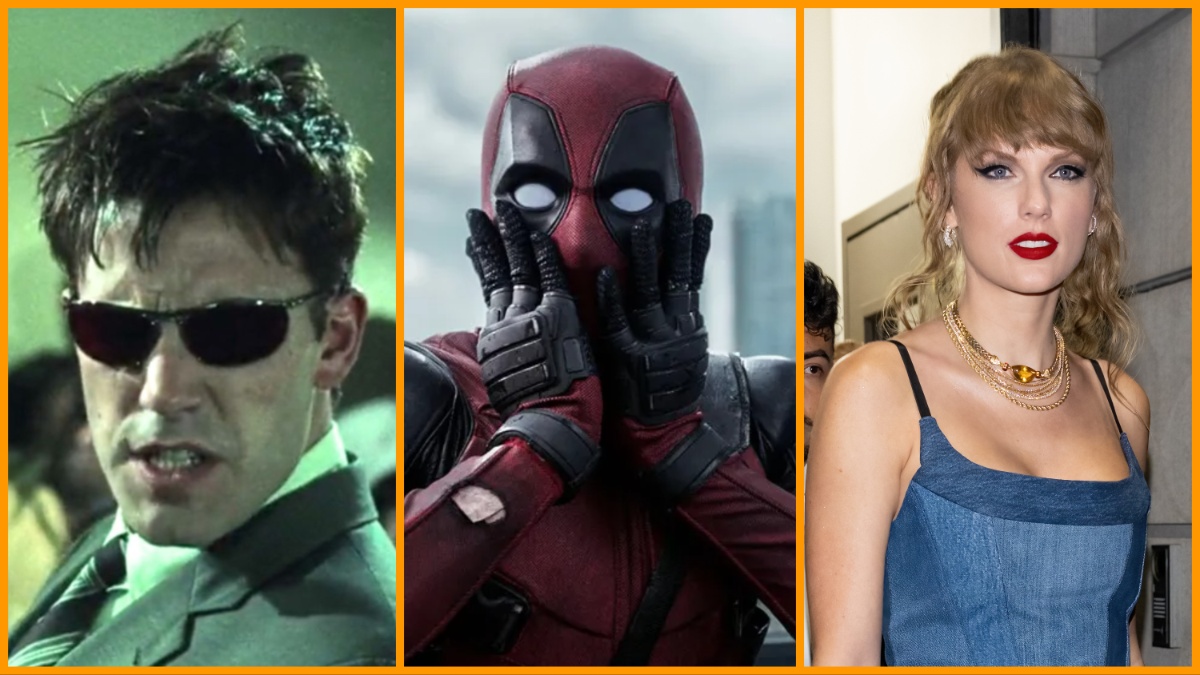
While Doctor Strange in the Multiverse of Madness might not exactly have lived up to its title, and Avengers: Secret Wars is so far away at this point to be little but an abstract promise, Marvel is working on what all the signs are pointing to be a cameo-filled, multiverse-destroying extravaganza of fan-service that you know is going to be the wildest ride MCU fans have had in a cinema since Spider-Man: No Way Home. And it’s name is Deadpool 3.
At the time of writing, a whopping total of 20 familiar faces have been rumored in some shape or form to be featured in Ryan Reynolds’ long-awaited MCU debut, which also memorably brings back Hugh Jackman as Wolverine. These claimed cameos vary wildly from legacy X-Men stars to old pals of Reynolds’ to bonafide superstars. You might be inclined to disbelieve all of them, but even director Shawn Levy has admitted that at least some of the reported guest stars are bang on the money.
The only officially announced cameo at this point is Jennifer Garner’s Elektra, so that just goes to show how literally anything can happen with this movie. With that in mind, here’s every supposed Deadpool 3 cameo, ranked from those that are all but confirmed to those that are so crazy they might just work.
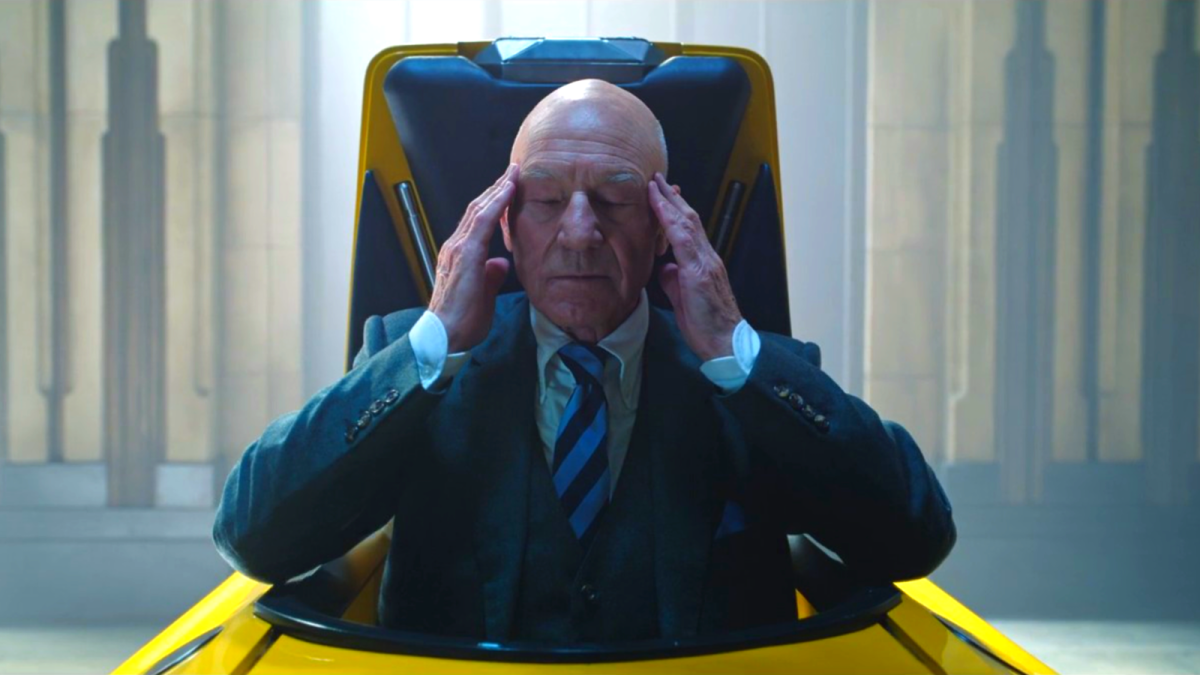
A cameo from the X-Men leader with the big brain is surely a no-brainer, yes? Sir Patrick Stewart’s already broken his MCU cherry with Doctor Strange 2 and, as an 83-year-old veteran of the Marvel and Star Trek universes who is so done keeping secrets, he’s also kind of admitted he’s in Deadpool 3 anyway.
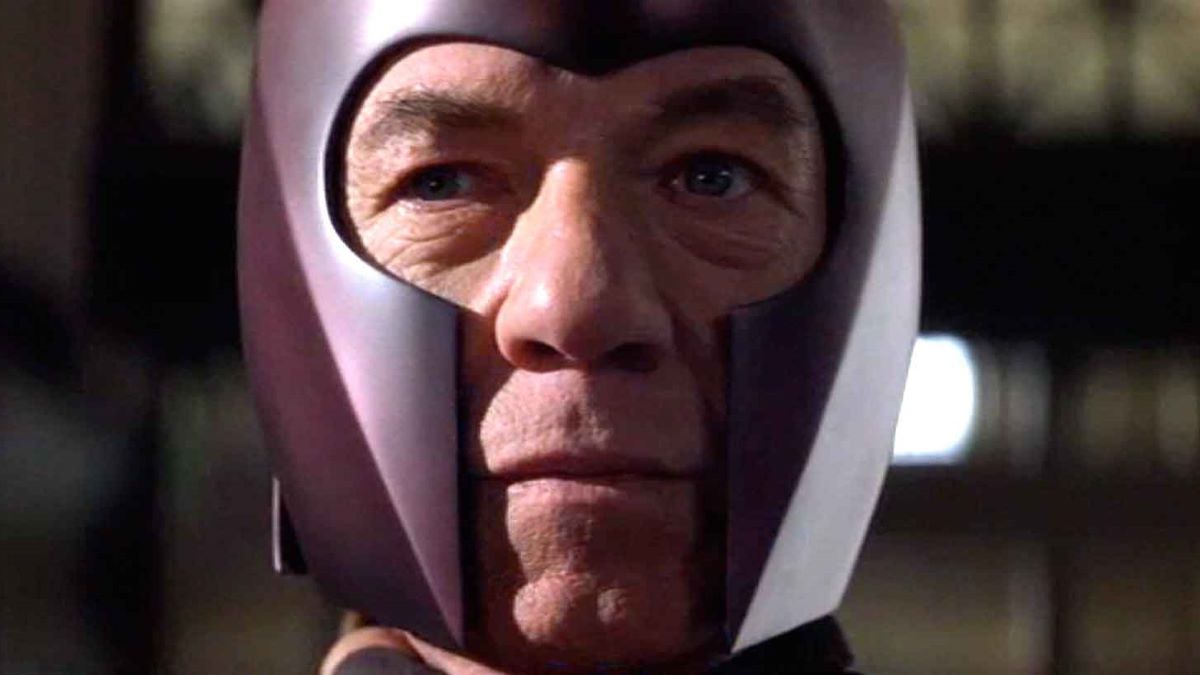
Sir Pat Stew is so done with keeping secrets, in fact, that he’s also strongly intimated that his off-screen bestie/on-screen frenemy Ian McKellen could be returning alongside him in Deadpool 3. McKellen has never been shy about reprising his own franchise roles, so this one feels like another cert.
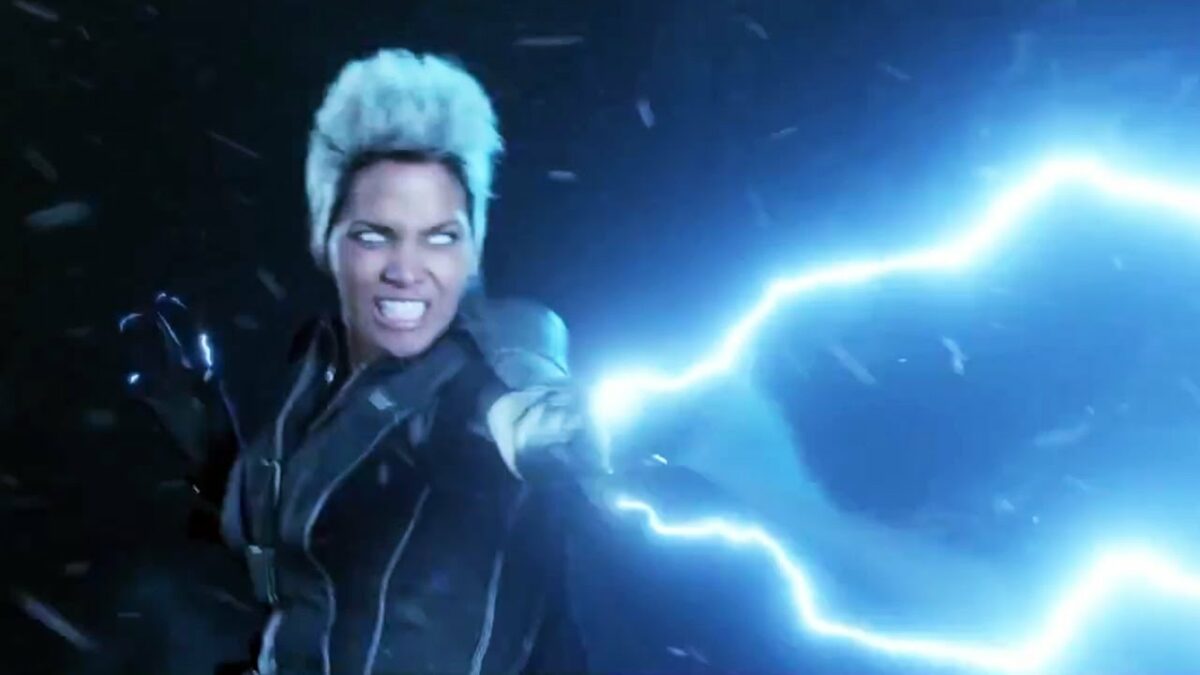
There are different ways of spoiling your own surprise Marvel cameos. You can get candid about it in an interview or you can really try your best to give Kevin Feige a coronary by sharing a stylish selfie on social media in which you rock a very familiar hairstyle. That’s the route Halle Berry took anyway.
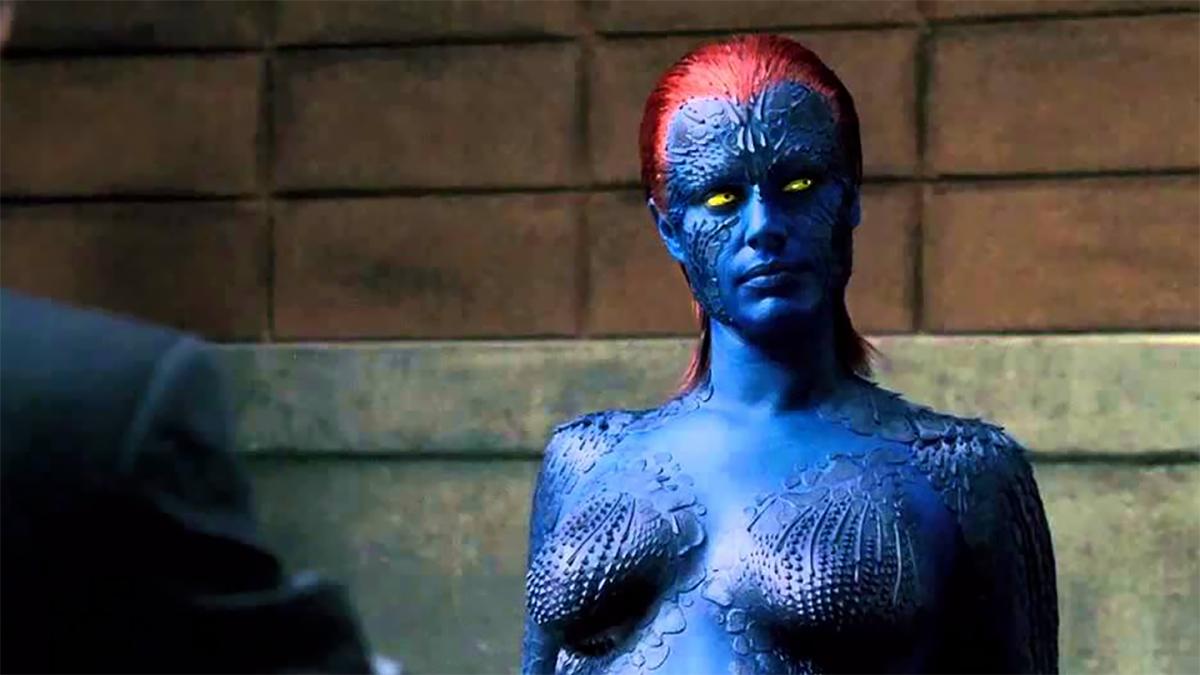
Rebecca Romijn returning as Mystique? Sure, why not? She already came back for a cameo in X-Men: First Class. Plus, blue-ing her up is probably a lot easier these days as it’d no doubt all be done with CGI. If DP3 can recreate Erik and Raven’s “being bitchy in the back of the school bus” routine from X2 I’ll be eternally grateful.
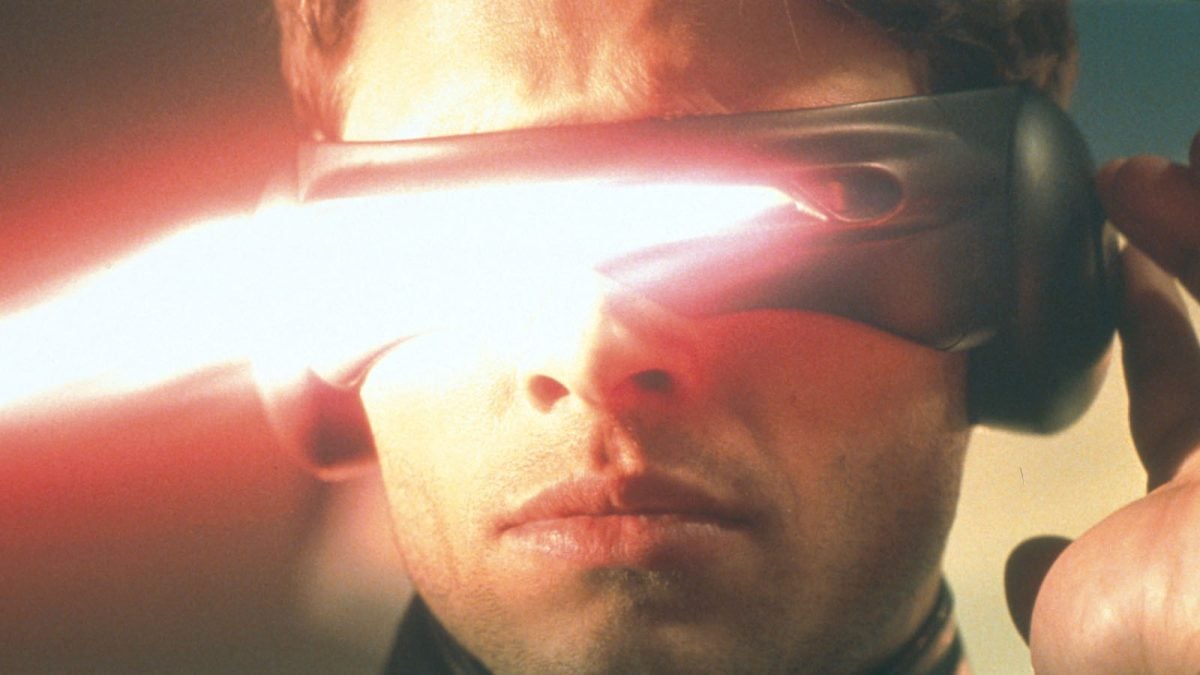
If any of Fox’s OG X-Men needs another crack at the whip it’s James Marsden’s perfectly cast, totally underused Scott Summers. Marsden is such a talented and funny actor that you know he’d make the most of getting to give Cyclops some personality over than his nth take on a cuckolded spouse.
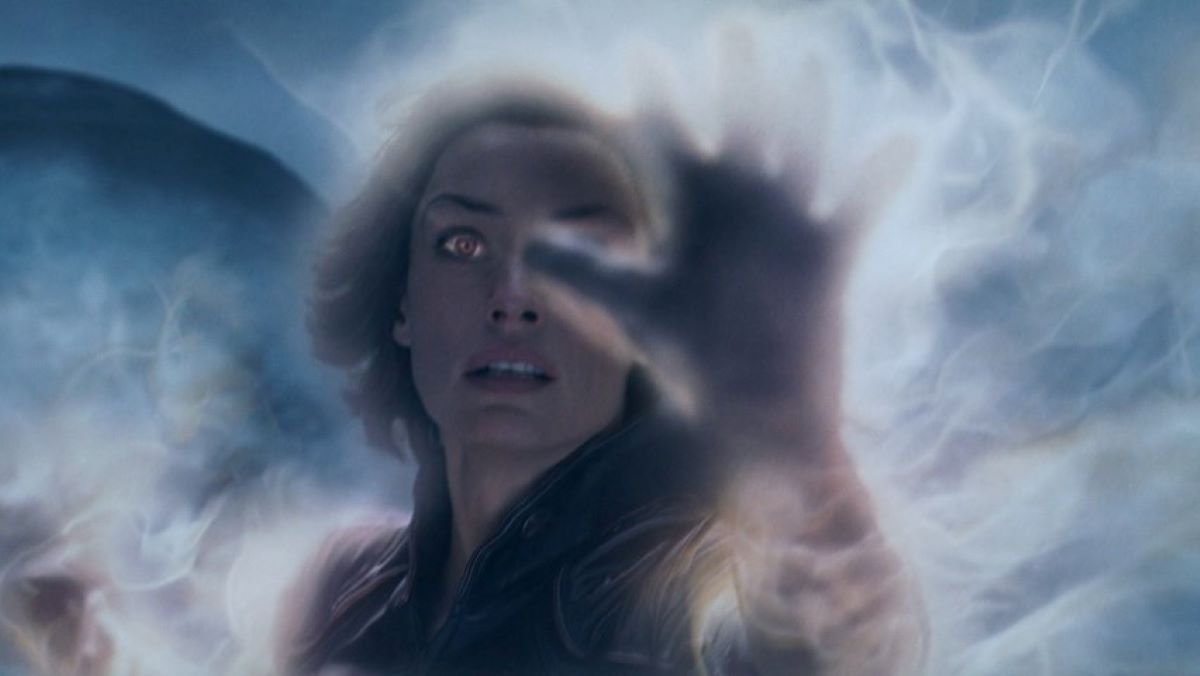
After Dark Phoenix was, well, Dark Phoenix, the entire X-Men community collectively agreed they didn’t want more Jean Grey on our screens for another decade at least, but I think we can make an exception for Famke Janssen’s OG Jean. Sorry, Sophie Turner.
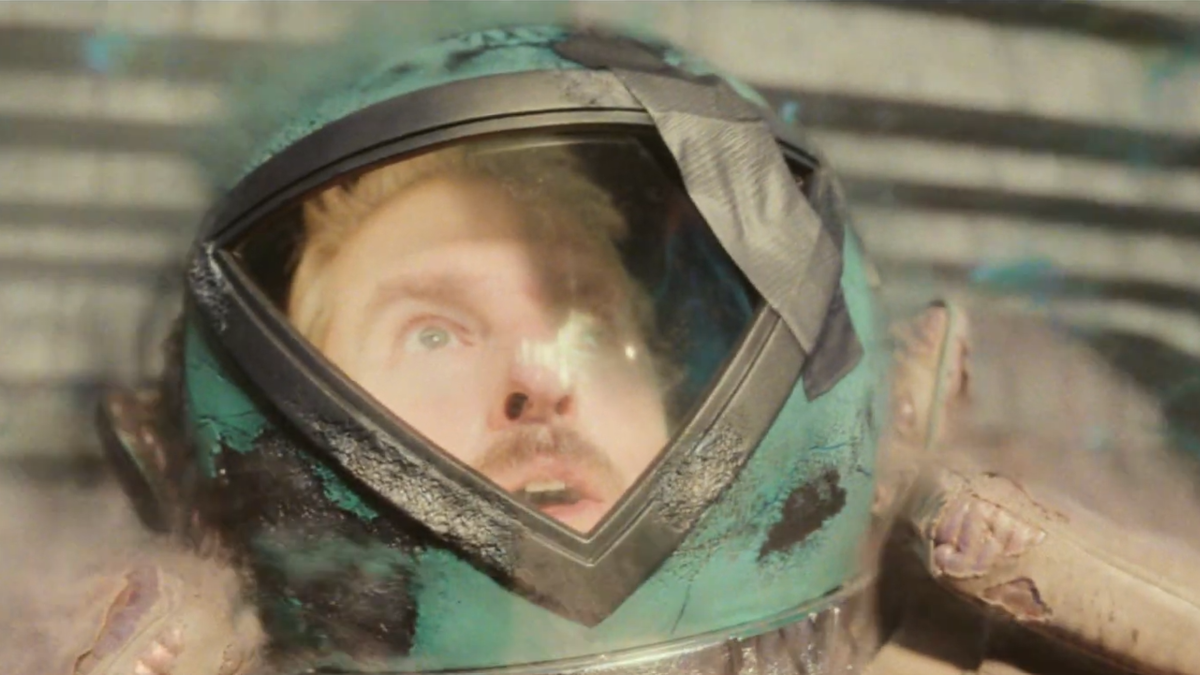
Deadpool 3 set pics have confirmed the Time Variance Authority will have some presence in the movie, so it only adds up that the TVA’s poster boy Mobius M. Mobius will drop by to chase down Wade Wilson. It’s just bizarre that it’s taken Ryan Reynolds and Owen Wilson this long to share the big screen.
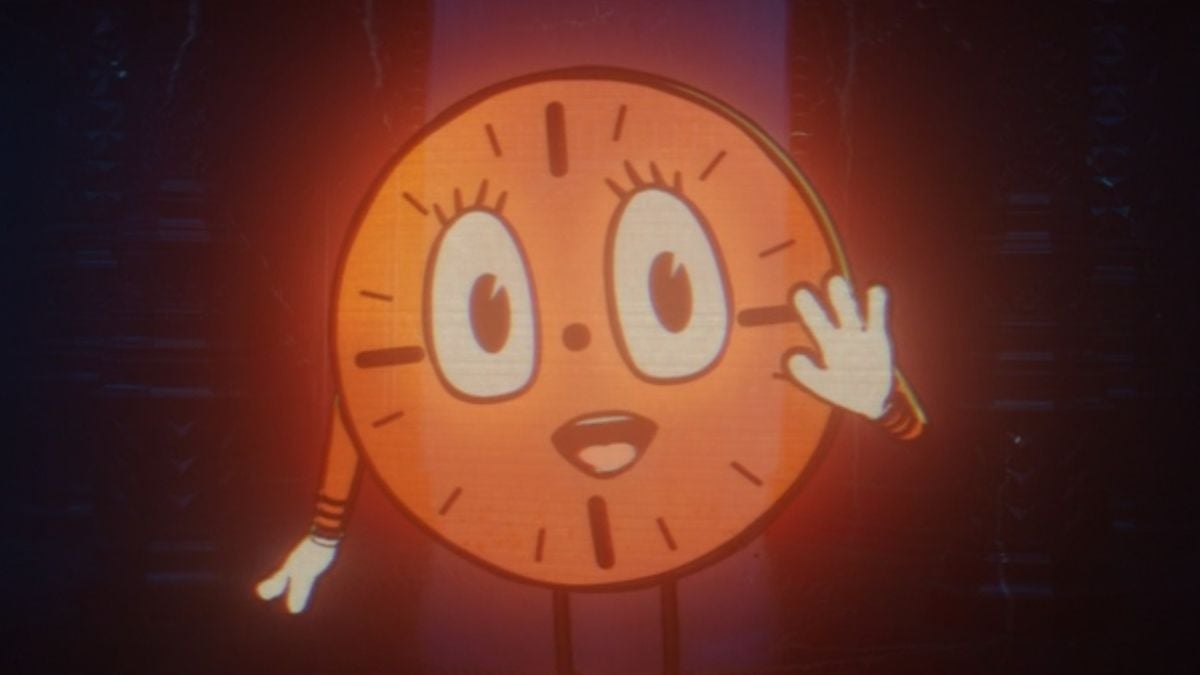
If Mobius is the TVA’s poster boy, then Miss Minutes is the organization’s mascot, so Tara Strong’s Texan-accented cartoon clock is surely set to pop up in Deadpool 3 somewhere. We know that she works directly with Kang, thanks to the Loki season 1 finale, so her inclusion may even tease the Conqueror’s own involvement.

Walker Scobell being in this movie would hardly be surprising, as Deadpool 3 is practically an Adam Project family reunion at this point. The teen actor turning up as Kidpool would be a little out of left field, though, as no other Deadpool variants have been rumored at this stage but, hey, this is what Reynolds himself has hinted at.
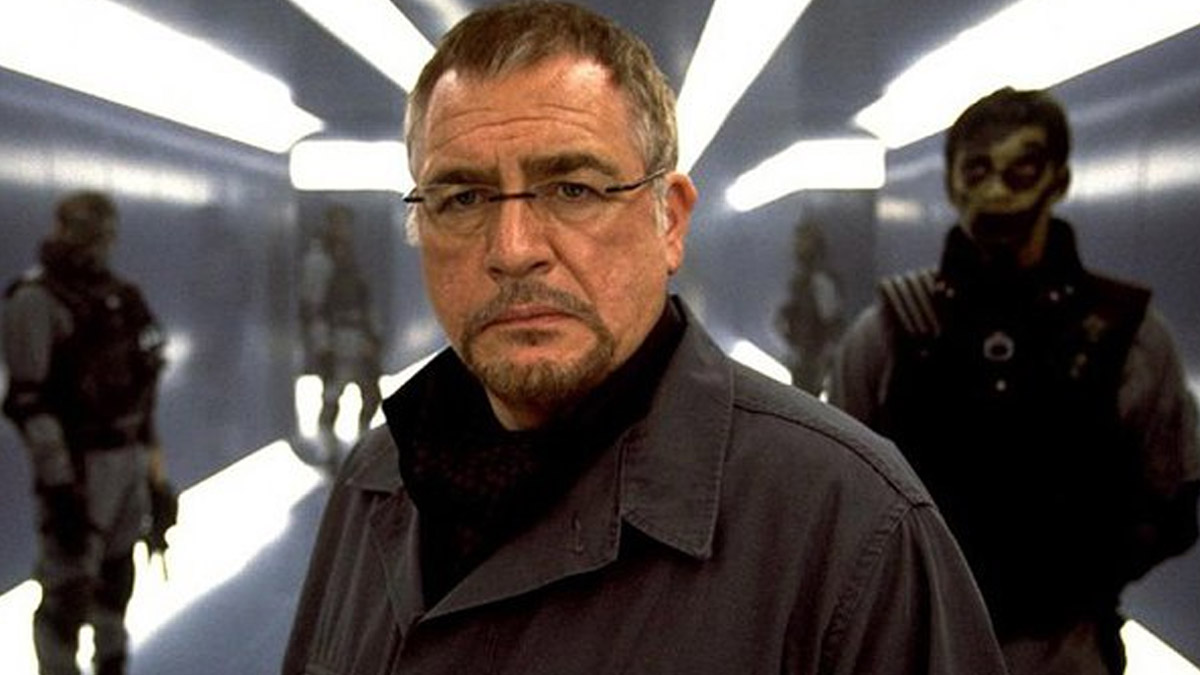
Brian Cox returning as General Stryker after over 20 years feels infinitely bizarre and unlikely at first glance until you consider the fact that bringing him on board for a cameo would allow Deadpool to drop a Succession reference. There’s no way Reynolds will be able to resist a “Logan vs. Logan Roy” gag.
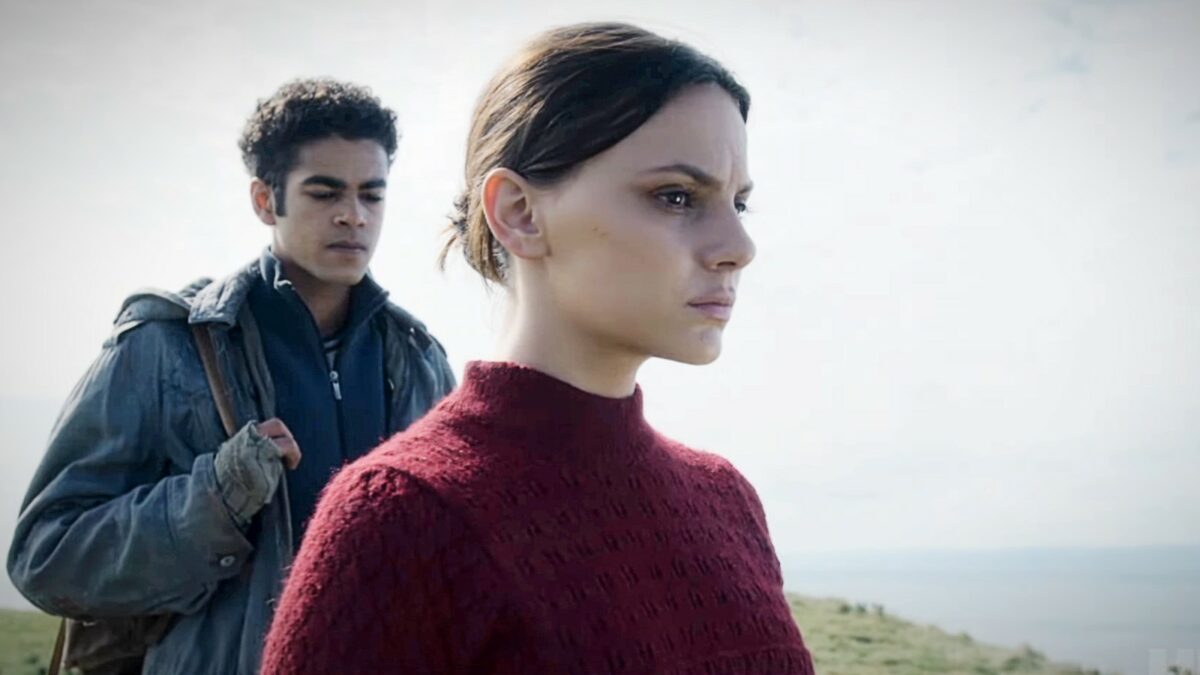
If Marvel was smart they wouldn’t just bring Dafne Keen (who first played Laura in Logan) back as Logan’s clone daughter X-23 for a mere cameo, but sign her up for a multi-movie deal now and make her the new Wolverine in the MCU. You can have that advice for free, Kevin, but next time I want 10%.
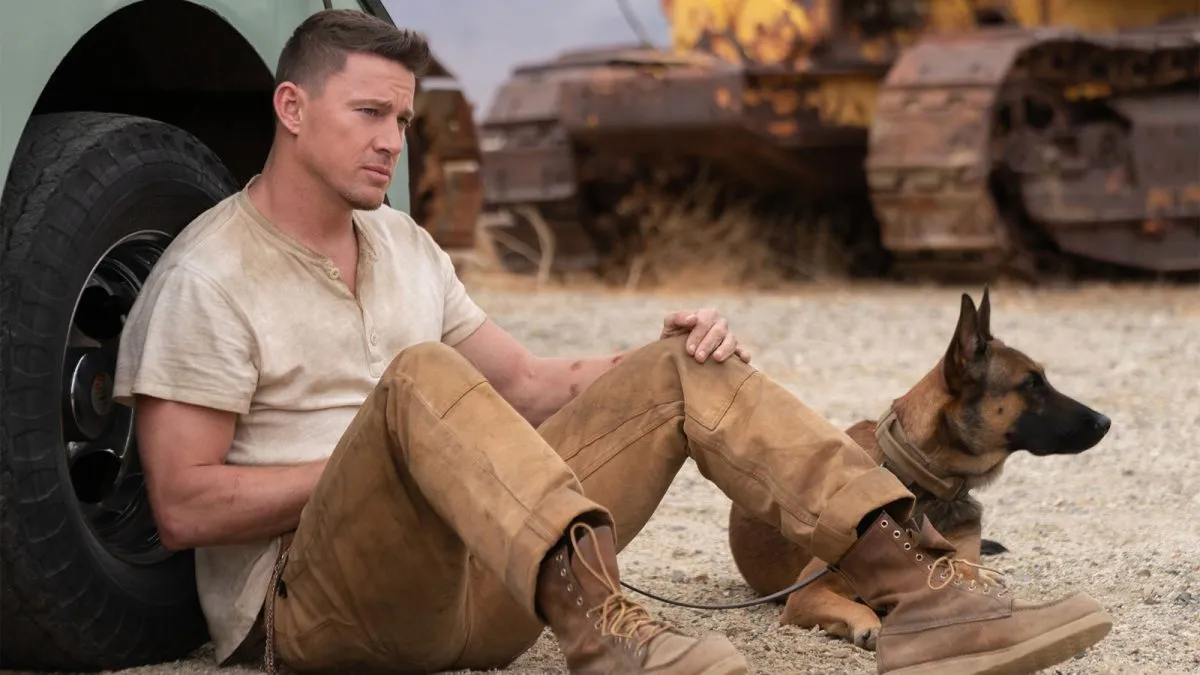
Channing Tatum cameod in Free Guy, so the idea of him reuniting with Reynolds and Levy in Deadpool 3 is surely too delicious to pass up. Plus, this guy has been desperate to play Gambit for so long that he’s kind of earned it. After all this time, though, his Cajun accent had better be up to snuff.
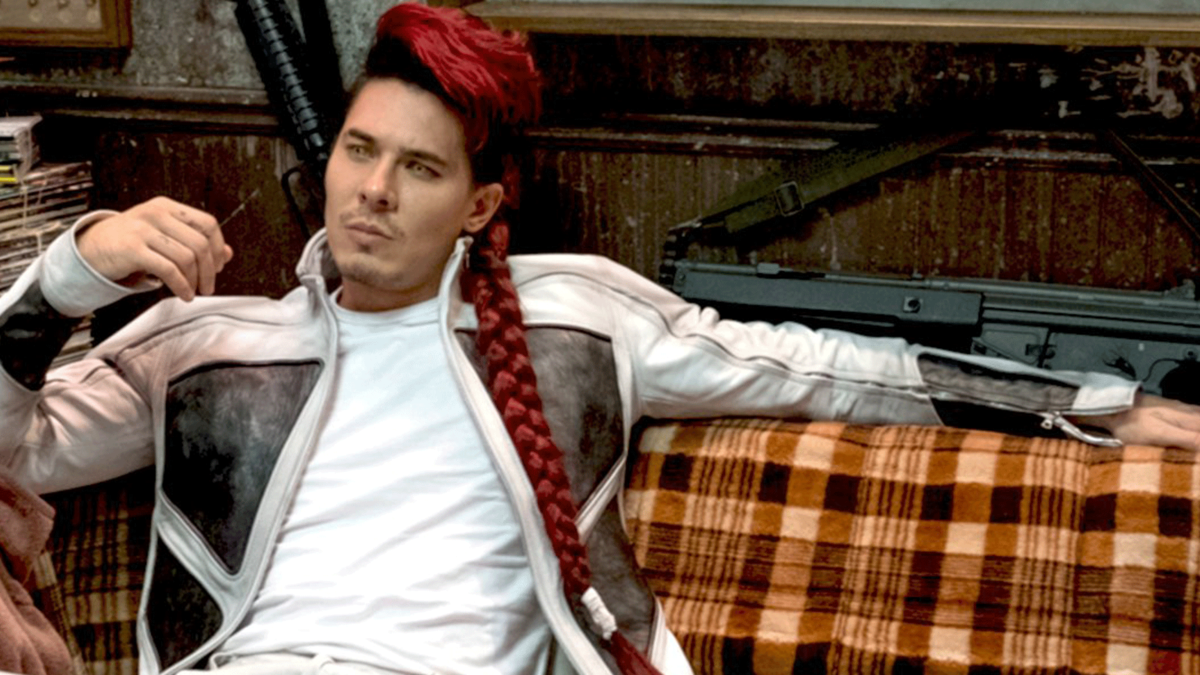
I’d love to be a fly on the wall of Marvel HQ when this cameo came up. “Forget Jackman and the rest of the beloved franchise veterans,” one exec must have said. “What about the dude from Mortal Kombat who turned up as a red-headed alien for two minutes in Deadpool 2?” It truly is the House of Ideas.
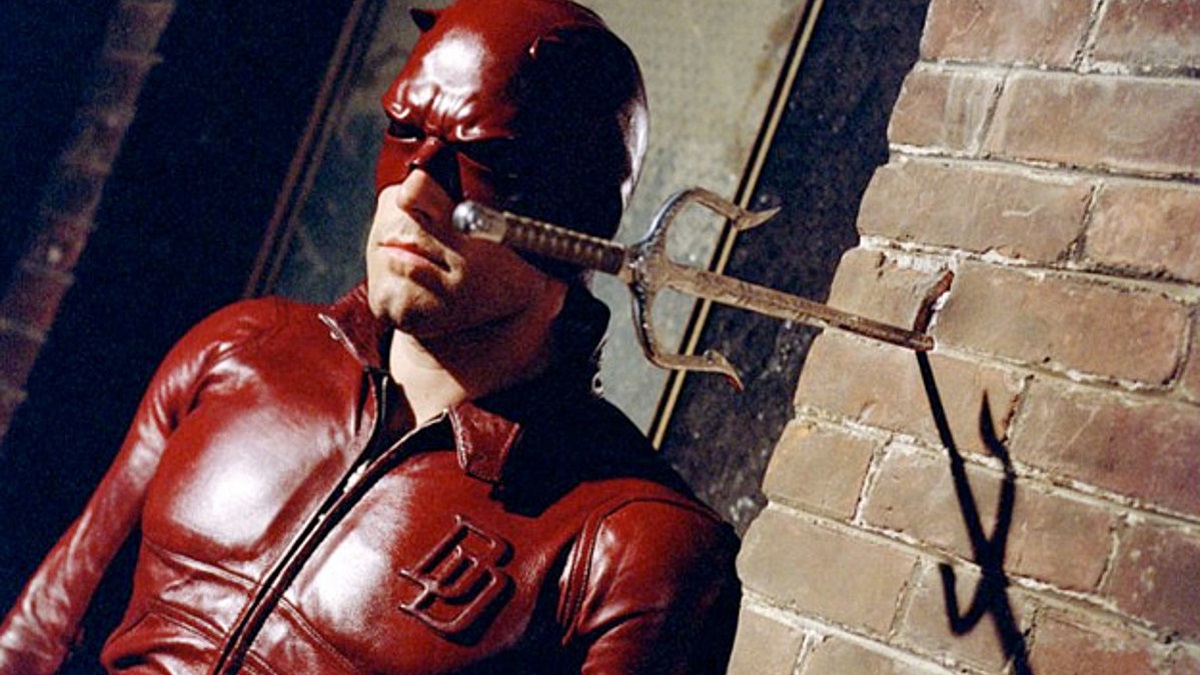
George Clooney returning as Batman was something we never thought we’d see, but Ben Affleck back as Daredevil?! Hey, Affleck’s life has been resetting to how it was 20 years ago lately, what with him getting back together with J-Lo. If this cameo happens, presumably we can next expect Gigli 2.
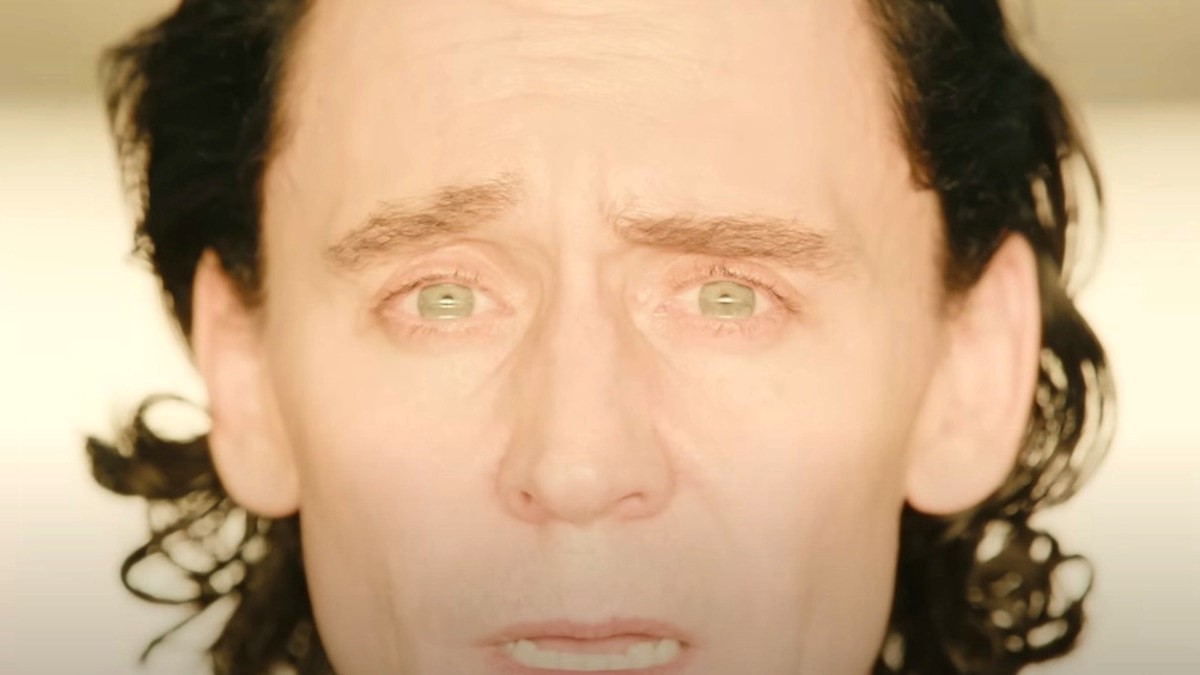
Tired: Deadpool should team up with Spider-Man. Wired: Deadpool should make some mischief with Loki. As Stan Lee would say, ’nuff said.
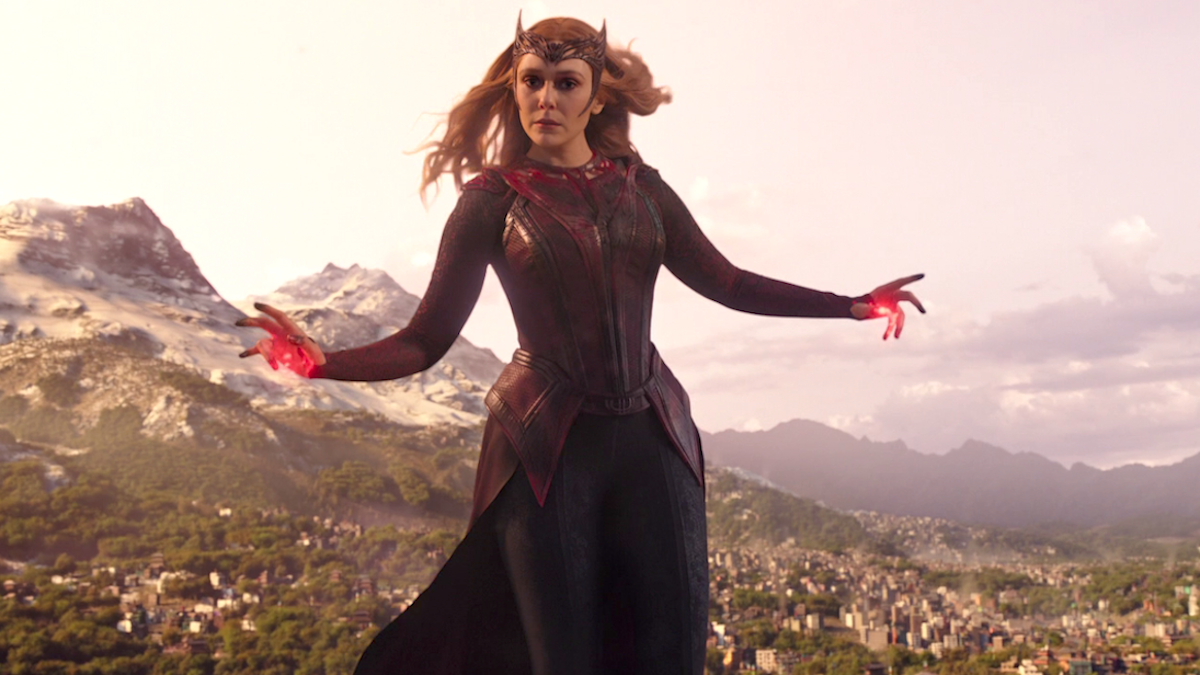
Scarlet Witch returning from the dead, after a dark and villainous arc in which she lost her husband and children and attempted to murder an adolescent, for a quick cameo in which she trades quips with Deadpool? Yeah, OK, let’s do it.
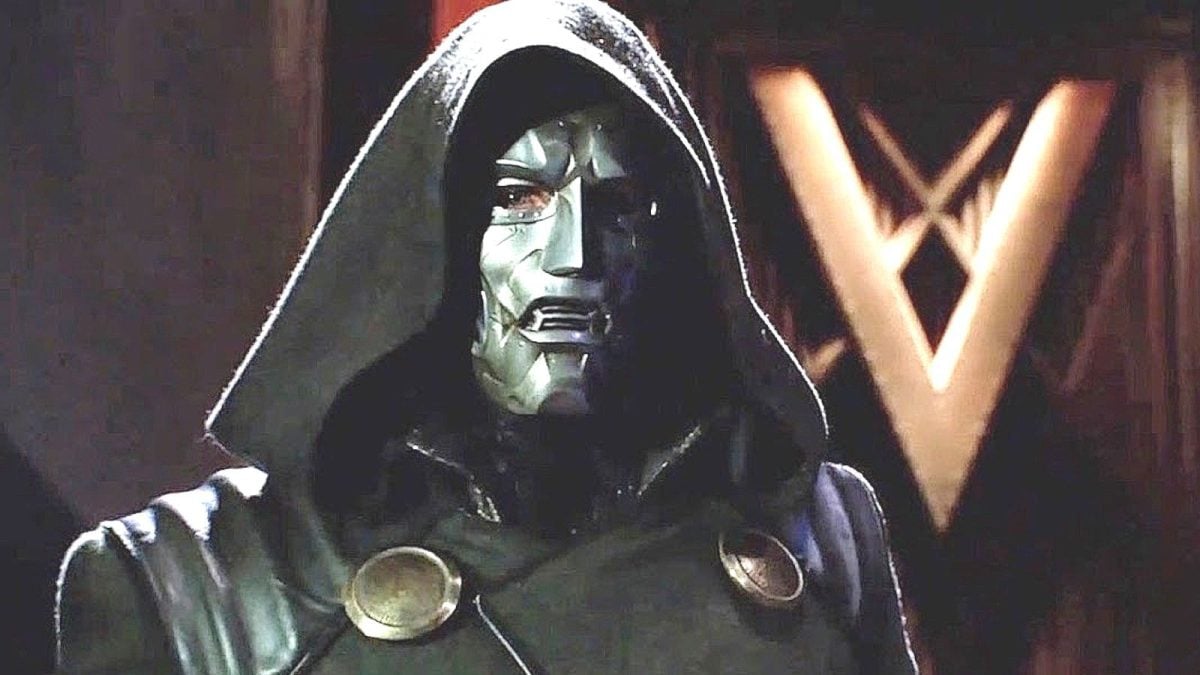
Yes, as it stands no one else from the original Fantastic Four movies is directly linked to DP3, apart from Julian McMahon’s Doctor Doom. It comes to something when the guy from Charmed remains the definitive cinematic incarnation of Doom after 60 years.
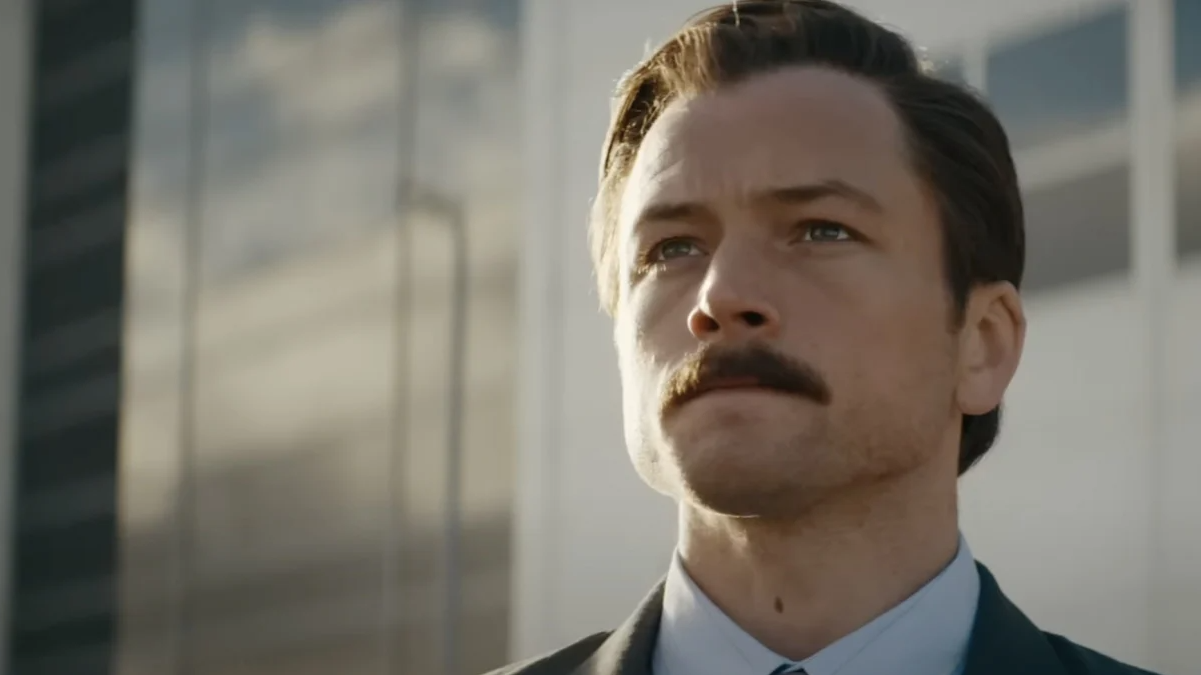
John Krasinski getting cast as Reed Richards really started something, huh? Now, any popular fan cast could come true, thanks to the wonderful cameo-creating powers of the multiverse. Taron Egerton as Wolverine full-time? Not gonna happen. As Wolverine for three seconds? Maybe.
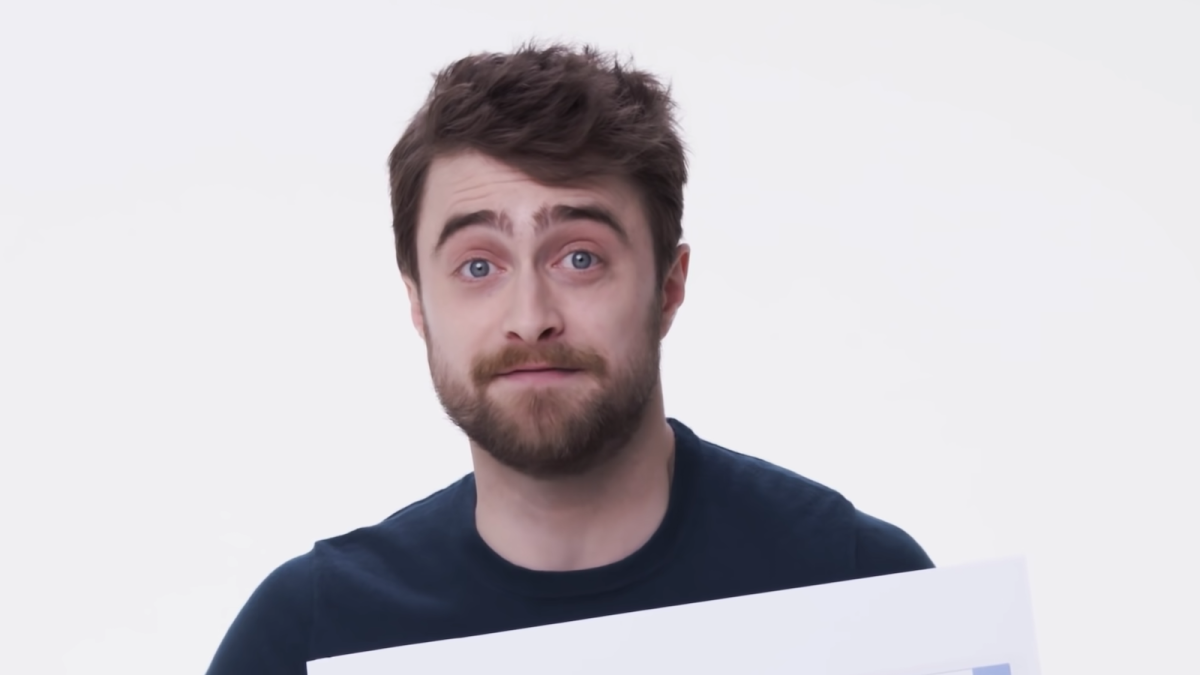
To be clear, Daniel Radcliffe is only rumored to have been cast in a “secret role” in Deadpool 3, but with the entire internet wanting him as Wolverine (especially after his recent body transformation) who else would he be playing? Glob Herman? Actually, wait, now I want to see that.
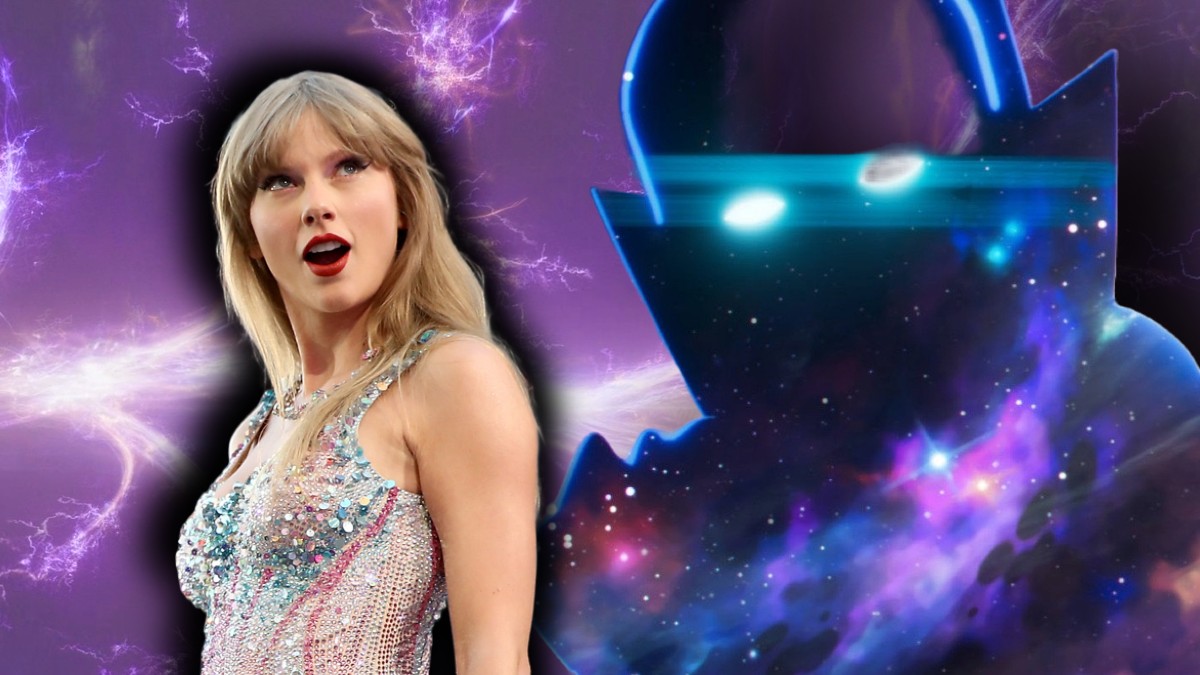
If this was any other movie we were talking about, there’s no way this would be real. But Deadpool 3? You could tell me the film ends with the X-Men coming together to sing “Shake It Off” like Kermit and friends crooning “Rainbow Connection” in The Muppet Movie and I’d half-believe you.